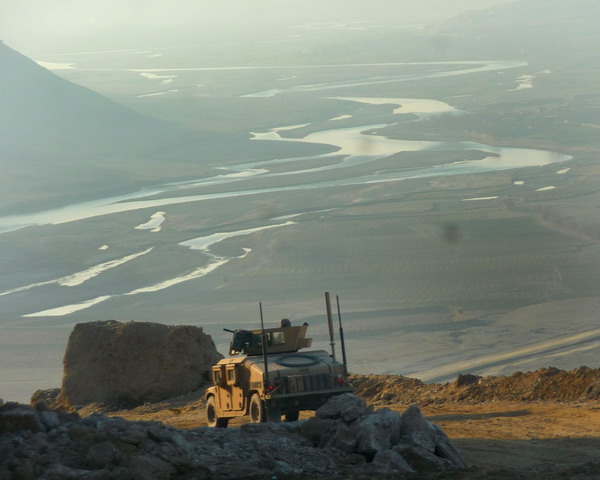
This vista is the Panjshir River in Kapisa.
Our vehicles traveling on a road we’re building.
Here is that same contractor again. He’s Pashtun and VERY jovial.
We stopped for a very quick meeting to say hello, but he insisted we have a bite to eat. He pays his 1000+ employees about $4/day (a very reasonable Afghan wage), but the big benefits are two meals a day and transportation to the mosque for prayers. Have I mentioned that Afghan food is tasty? Well, this image shows one of my favorite meals: dry bread with rice, dipped in a meat sauce.
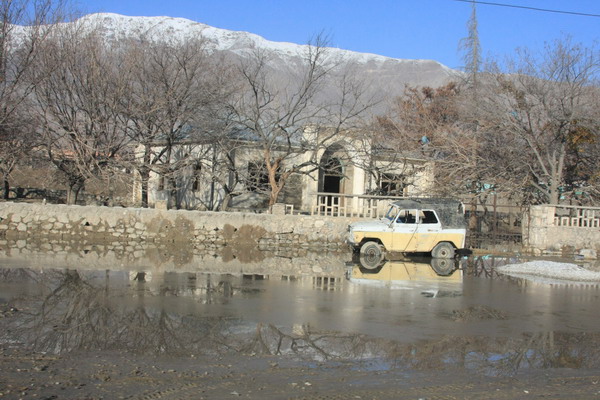
Here is another view of Parwan Province.
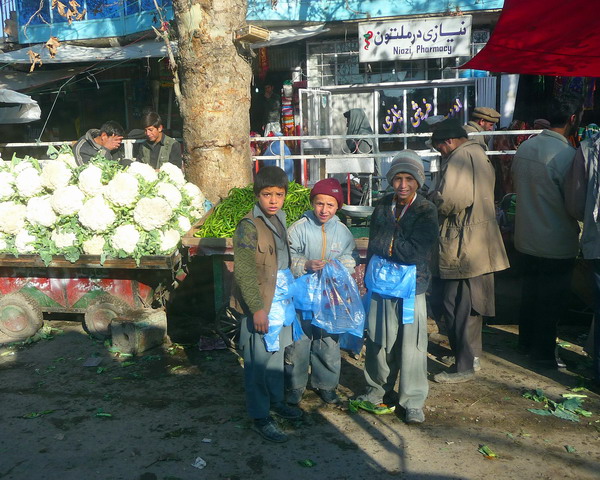
These boys are in a market in the city of Charikar.
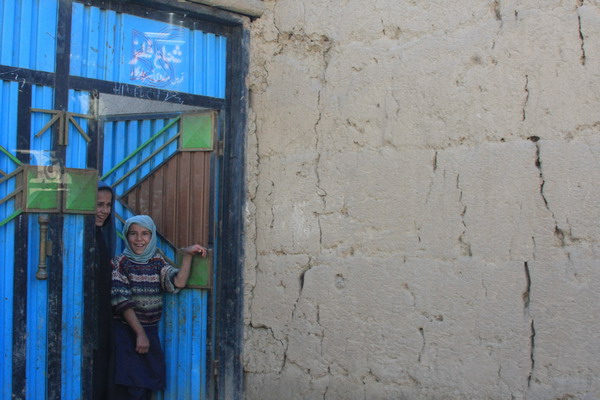
The contrast is stark here.
The next set of pictures is from our Christmas Eve party (and we repeated the event on New Year’s Eve). Jon (our Doc) wanted to share his family’s tradition with our team. So, we all enjoyed a cigar together on a cool Christmas Eve.
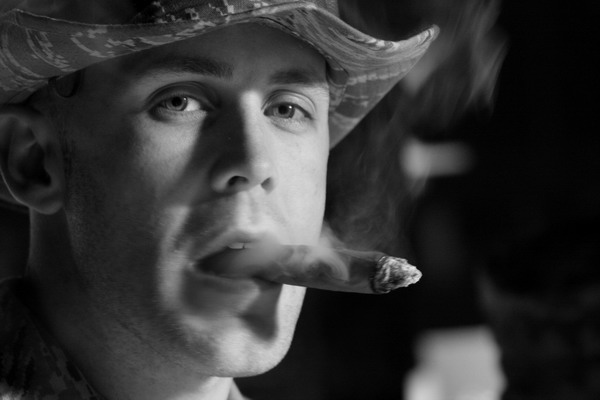
This is Patrick.
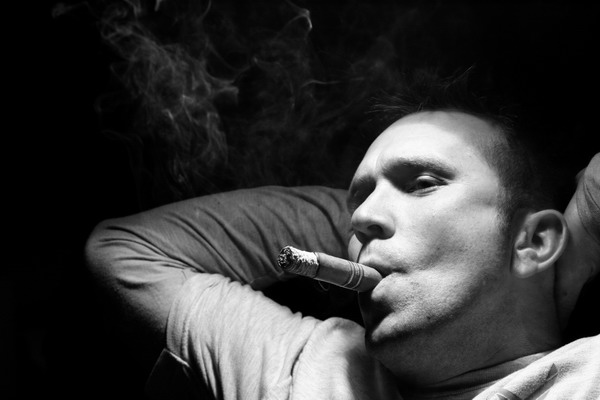
The George.
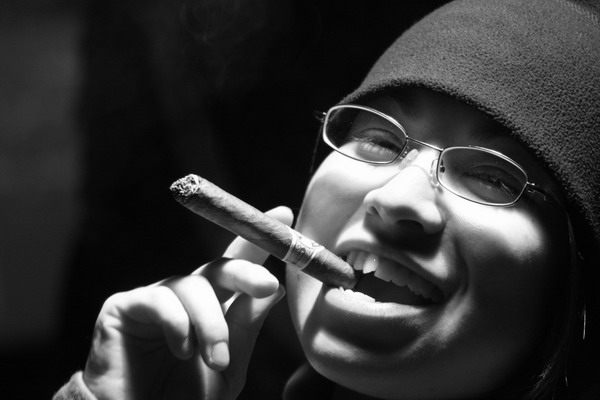
Cindy.
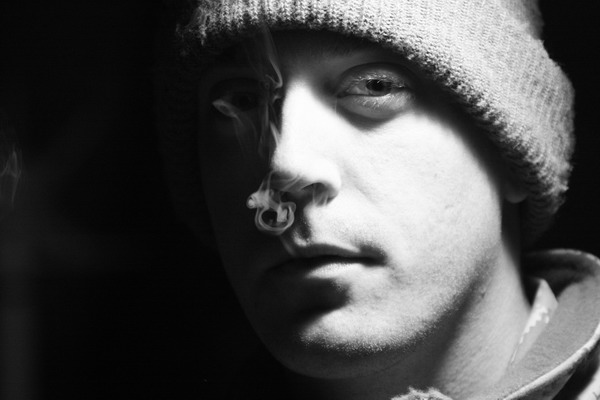
Daniel, who is gifted with languages and computers.
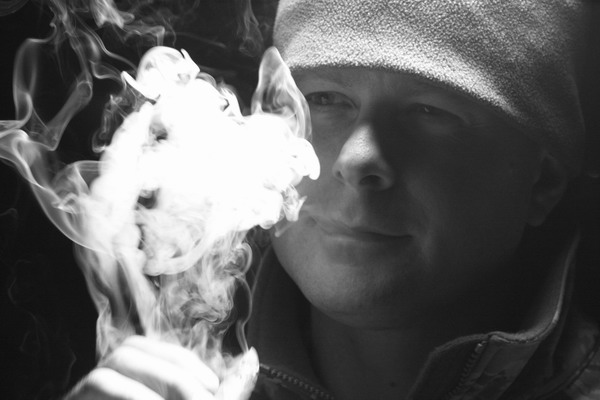
Todd, one of the other civil engineers, who does a great job, no matter what he’s doing.
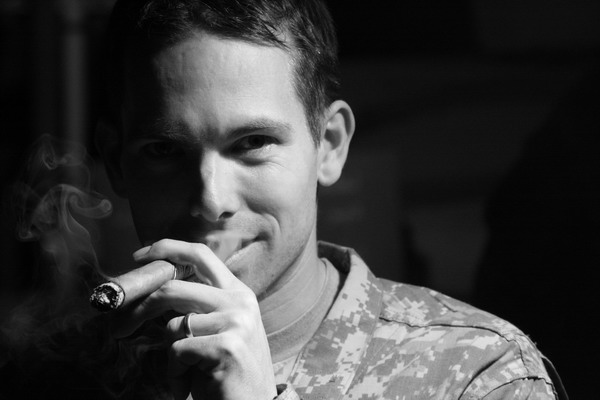
Yes, I enjoyed a cigar too (sorry, Mom).
We have many meetings with the Afghans.
The Afghans also have many meetings with us. This particular one is to gain support from the leaders of the area around a proposed project. The idea is that we present project proposals that are technically viable and sufficiently planned to a board of Afghans. They then have a voice in the process to recommend a contractor. With that process, we gain buy-in and they can help ensure a quality project is produced. Although we (the US govt) retain final authority to choose a contractor, the Afghans help us choose the best contractor for every project.
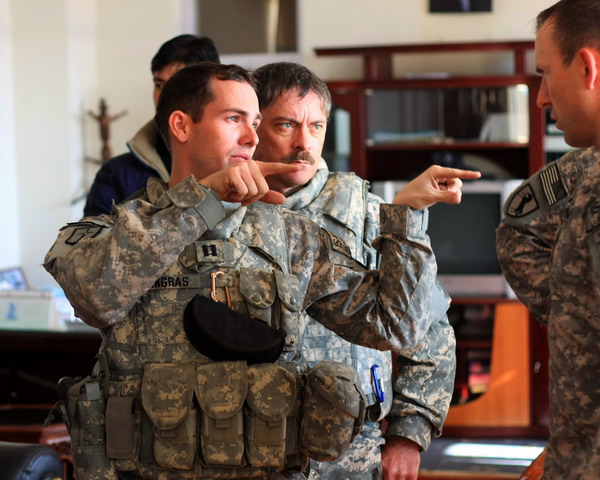
I know I look a little funny in this picture, but I was emphatically indicating where we needed to go.
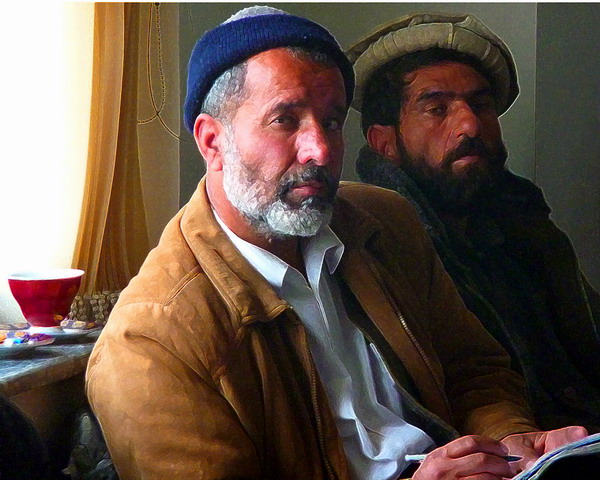
These gentlemen were in a meeting with us. I love the lighting in this image and the Chief added a great filter. Now, I think this image could be from an Afghan Van Gogh.
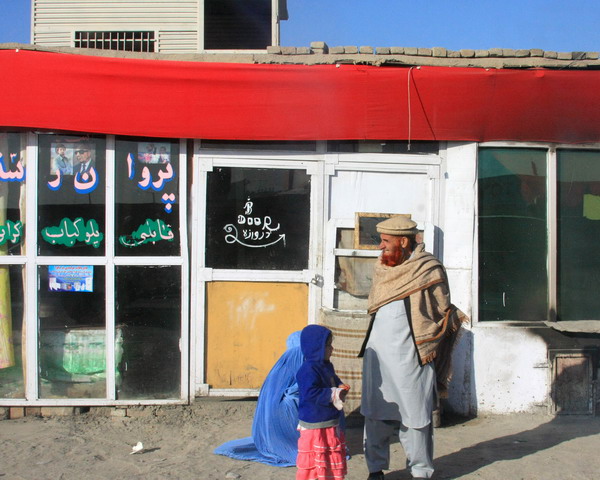
I’m not sure if this color is natural or not, but it’s certainly colorful.
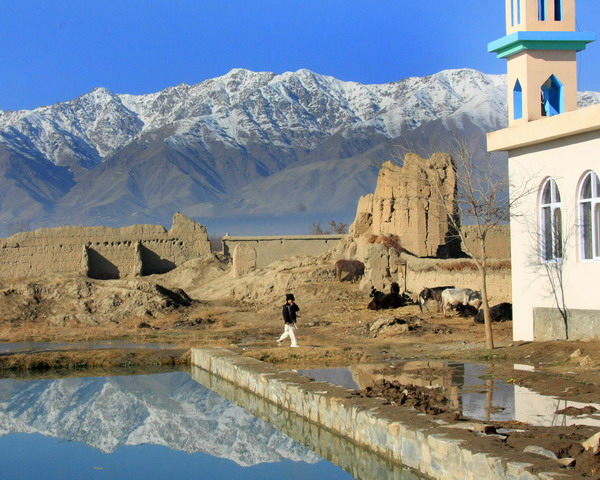
More interesting contrasts: the new and old, the water and desert and reflection and reality.
Those images depict our second month here. My time here remains a very rewarding and exciting experience.
I look forward to the summer when construction can resume in earnest.
Until the next post…
–Jim
Afghanistan — Month Two (Part 1)
OK, now that we’ve been in Afghanistan for about 2 months, I thought it was about time to sort through all the pictures we’ve taken and show you a few. As was the case with the last post, most are my pictures, but not all. In the age of digital media, every time we doing anything, we photo-document the event.
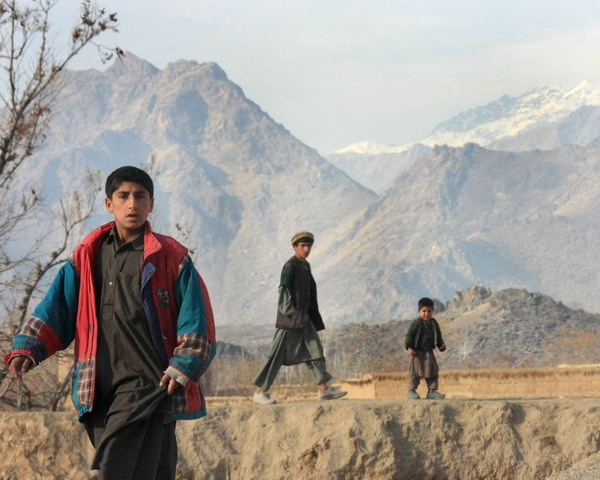
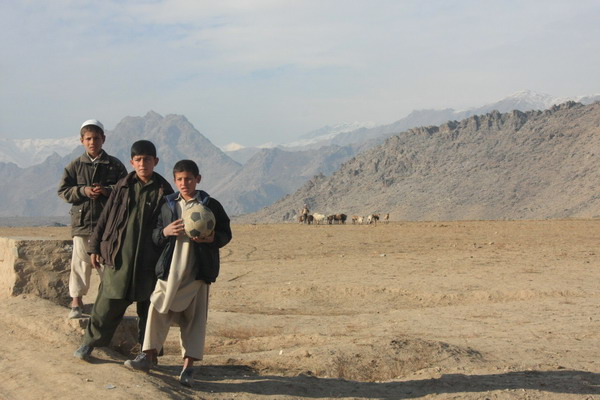
These boys are from a small village in northern Kapisa.
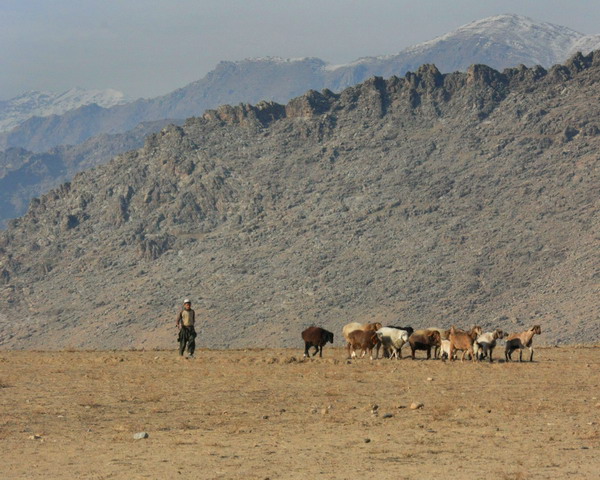
These goats and their herder are from the same area.
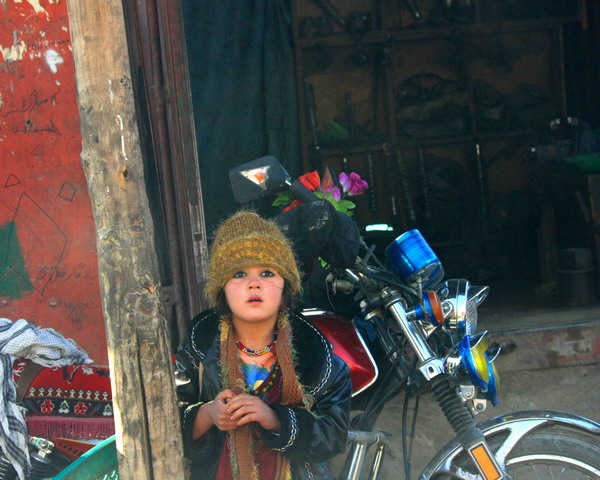
I love this girl’s expression. When we move through towns and villages, we tend to attract attention. So, we also get a range of expressions: From awe and wonder, to apprehension, to fear, to joy, to resentment. It really covers the whole spectrum.
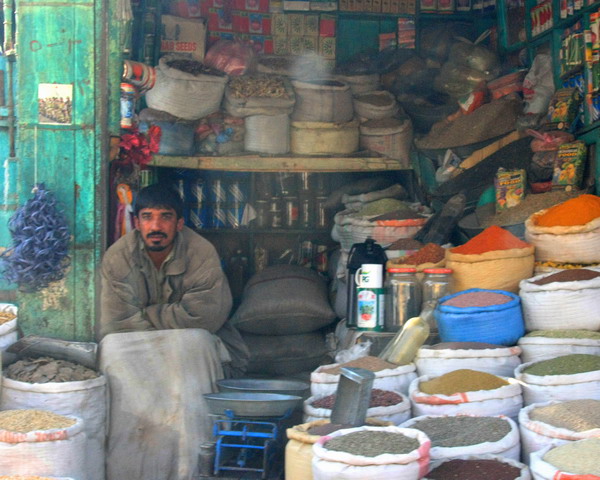
Spice is a very important part of Afghan cooking. I’ve had the pleasure of tasting some very delightful meals. In fact, I would say that the food here is some of my favorite. Although I stay away from dairy products now, pretty much everything else is delicious. I highly recommend going to your local Afghan restaurant to try for yourself.
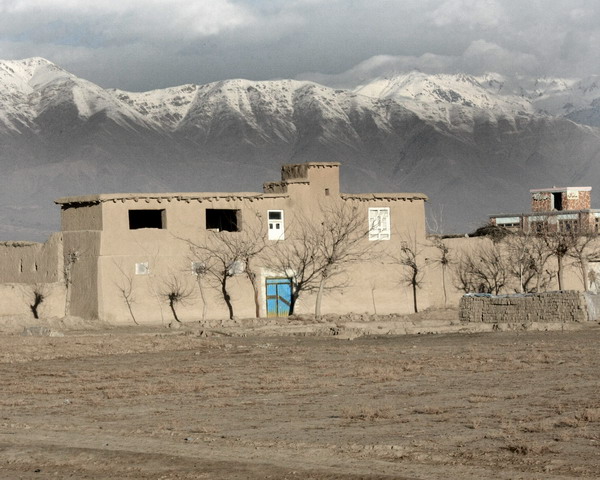
This khana (house) is very typical Afghan construction. It’s from a trip we took in Parwan Province.
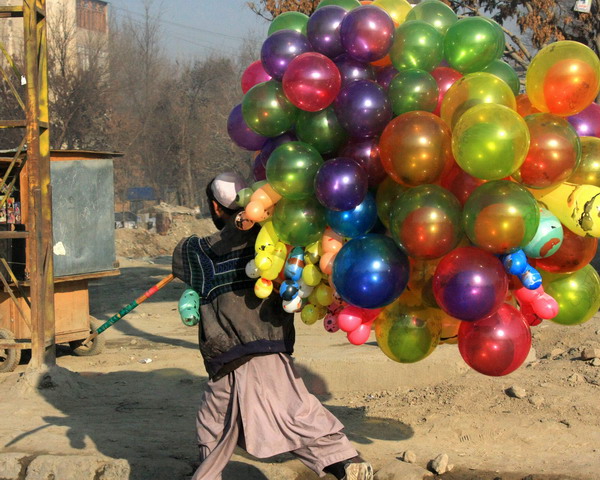
When we went down to the embassy in Kabul, this colorful balloon seller was walking down the road.
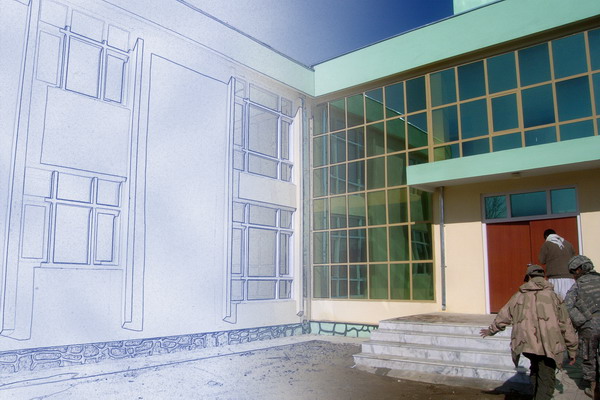
Although you can tell this image has been through Photoshop, it’s a good representation of taking a building from conception to design and finally to completion. It is also from Parwan Province.
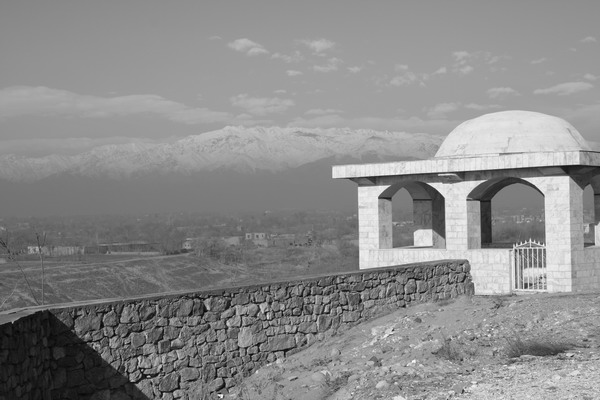
A great view over Kapisa Province.
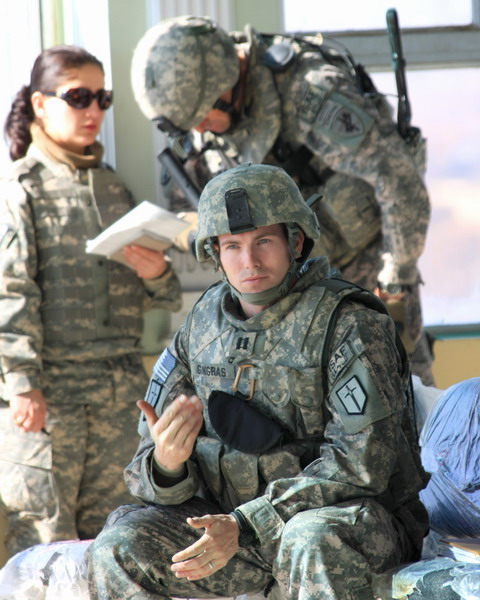
This is during a collection of contractor proposals. I think I was getting a little anxious and was ready to go…
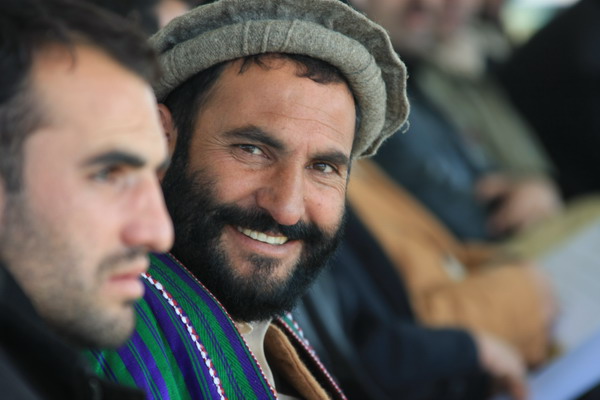
This is one of our contractors. You’ll see him again in the next post.
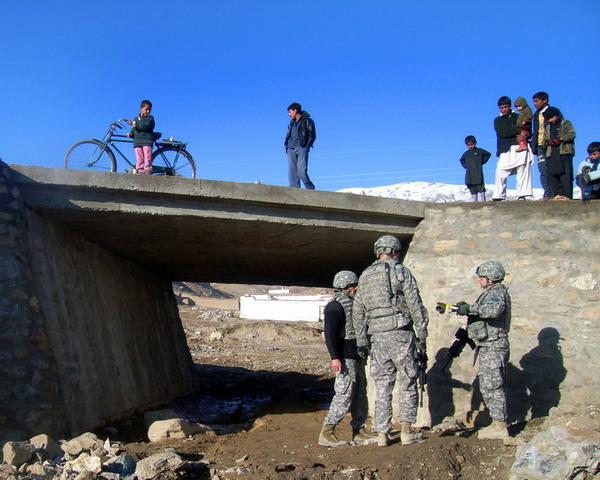
Here we are out inspecting a small bridge we built in Parwan.
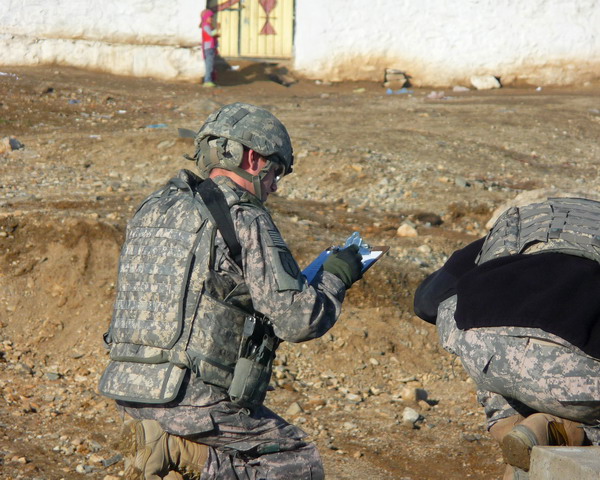
Taking notes to inspect the quality.
I even had a little help taking the measurements.
Here are some of the workers. The stone masons here can do incredible work.
The Afghan government (with our help) puts on women’s capacity building training on a regular basis. Often, it’s in the form of successful Afghan women (elected leaders, judges, doctors, ect) who come and speak to other Afghan women to educate them on ways to improve their station in life. The idea is that if women know more about their rights and have a greater voice in society, then the more moderating influence they have. Although there are parts of our area that too conservative (read: women’s rights repressed), most areas are very receptive to this type of training.
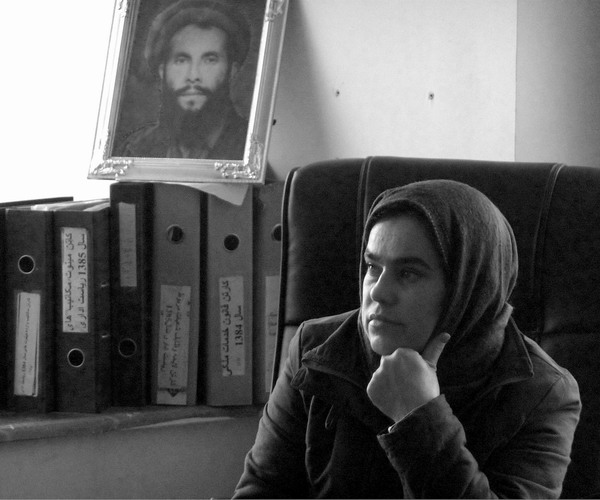
The Afghan constitution also stipulates that there will be a certain number of women representatives (30%). She is an example of that and is a member of the provincial council, which is part of the elected leadership of the province.
Many were lined up, waiting to come in.
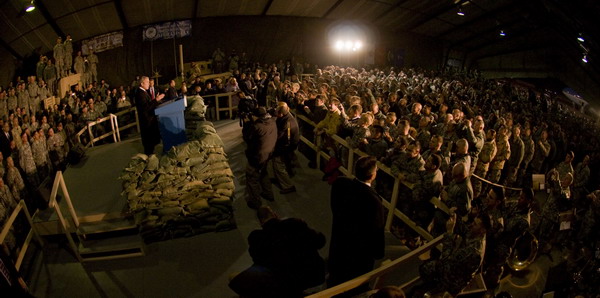
This image is from the recent visit by President Bush. Although I didn’t get a chance to meet him, it was a nice gesture that he stopped to say hello. Fortunately, no one here threw their shoes at him.
So, that concludes this post. I will have another one shortly.
Until then….
–Jim
Afghanistan — Month One
Well, I have now been in Afghanistan for a month and a half … and this country is as beautiful, amazing and more troubled than I remembered. However, I feel that although we have a long way to go, progress is being made. As you may recall from my post in October, my role here is the lead engineer on a provincial reconstruction team for Kapisa and Parwan provinces. My team is made up of military from the Air Force and Army, as well as civilians from the Departments of State, and Agriculture, and the US Agency for International Development. Our role is clear: help the Afghan people by helping to improve Afghan government, infrastructure and rule of law all to enable economic development and prosperity. At the same time, Afghan and coalition forces provide the requisite security.
I truly believe once people believe that their government is legitimate and enduring, trust their court system, have the ability to earn a licit salary Afghans will end this conflict themselves. I work everyday with Afghans and their enduring hope for the future gives me reason to work as hard as possible to help them realize their dream of a safe, stable, and successful homeland.
This is truly a worthy cause that the international community needs to see through to completion.
You can see from this picture just how ruggedly beautiful this country is.
This picture is a little out of order, but it’s from the flight in on a C-17. You can see varying levels of anticipation in everyone’s face.
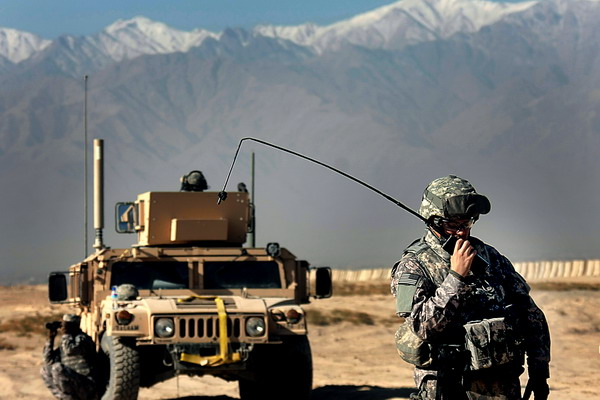
This is Lionel directing the operation. We were out making sure our weapons still worked.
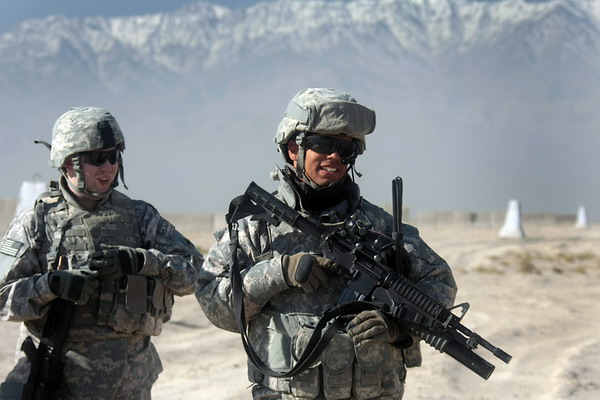
SGT Durden (on the right) always has a smile, great attitude and is a member of the hard working security force for our team.
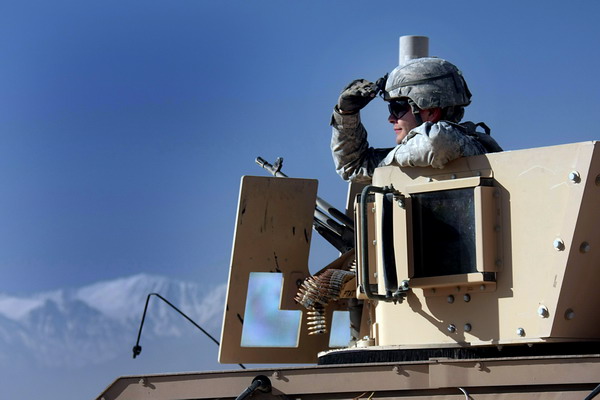
JePe (pronounced Hep Pay) checking our perimeter.
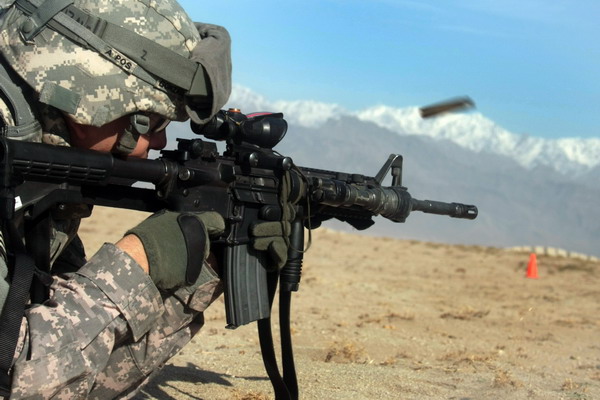
Yep, the weapons still work.
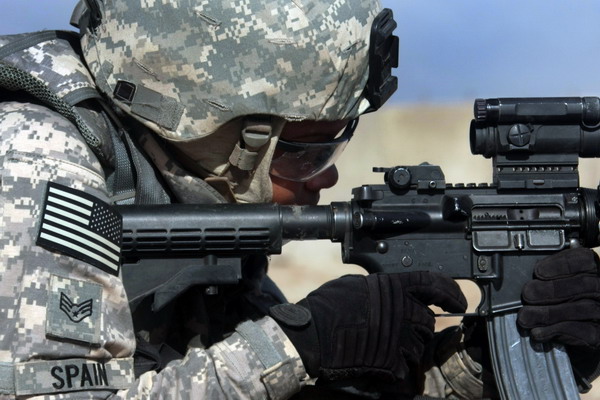
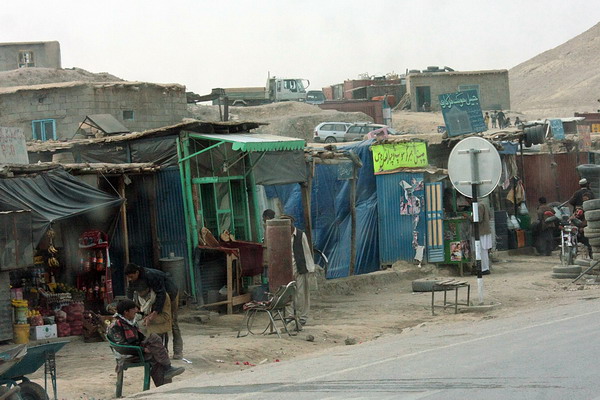
This is probably the most common form of commerce in Afghanistan. A small booth along the road. As you can imagine, the better the road, the better the access to markets. As such, we’re very focused on building and improving roads.
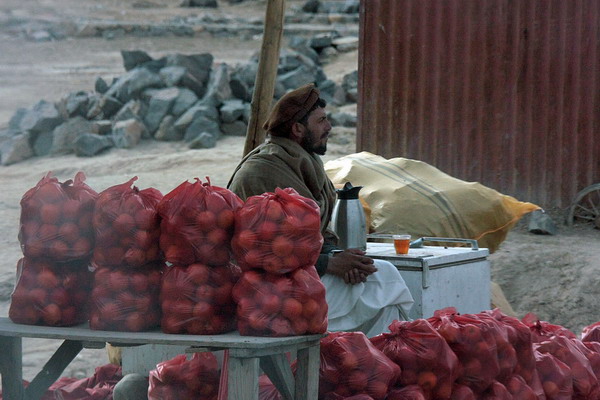
This vendor is selling my favorite Afghan produce, pomegranates. These tasty treats were first cultivated in this area and are grown extensively in the area. One of our projects was to help connect farmers in our area to local markets. Economist Article on Pomegranates This fruit has the potential to be a cash crop and replace poppy production in some parts of the country. We’re also working on two saffron development projects with a similar goal.
Many remnants of the Soviet War still remain.
You can see why passable roads are important.
These guys are the ones who ensure we’re safe as we go around the countryside.
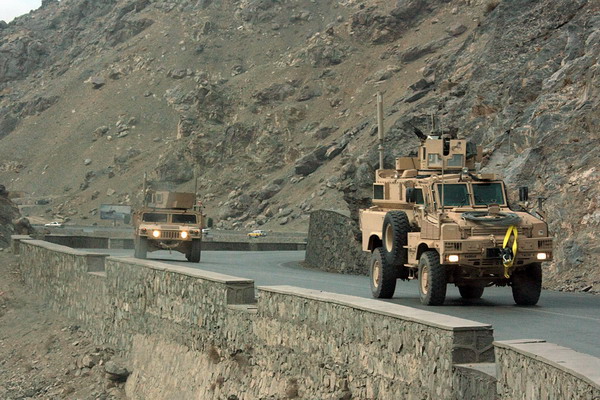
I’m sure you recognize the up-armored HMMWV on the left, but the vehicle on the right is an MRAP and provides even more protection.
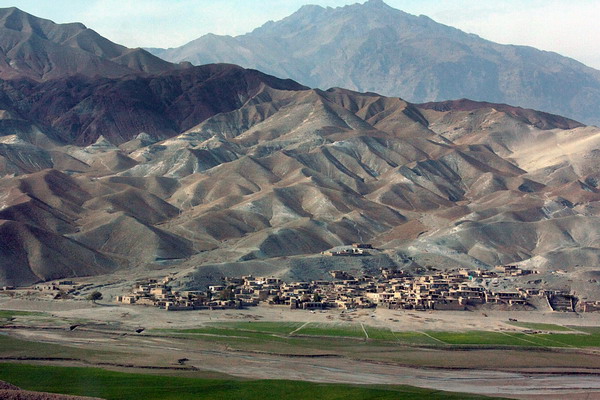
A typical Afghan village.
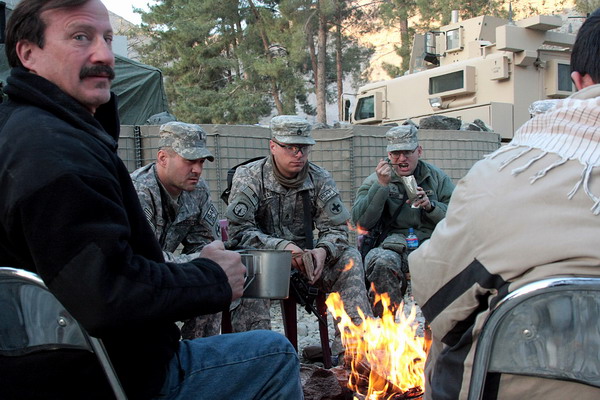
This is an image from one of the austere FOBs we stayed at. Although it was small, the campfire was a nice touch.
The guys had fun sitting around telling stories. The Afghan National Army also has some soldiers here. So, I enjoyed having a traditional meal with their commander. He has some very interesting ideas on how to solve the problems of his country. As you might imagine, he believes that security is the number one problem (I didn’t disagree). However, to fix it, he recommended, “instead of sending another 20,000 American troops, use that same money and train 100,000 more Afghan soldiers. We know our country and with enough people, we can get it done right. I am willing to die for my country. I don’t want you to have to.” Although the solution isn’t viable, it was a very interesting conversation. Keep in mind, this whole exchange was done through an interpreter. Although I am learning Dari (Afghan Persian … the language of many people in Afghanistan), I am not even close to fluent. So, without the help of these unsung heroes, we couldn’t hope to succeed.
This is Naghlu Dam and provides a great deal of power to Kabul. Unfortunately, it doesn’t power any of the surrounding region, a region that is particularly unstable. Someone at the Embassy told me, “this war can’t be won in Kabul, but it can be lost in the provinces.” Perhaps we can renovate this hyrdo-electric power source and use part of the power to electrify the surrounding valleys.
Although the electricity would be great for this area, water is its lifeblood. So, the proper management of that resource is paramount.
It is a very pretty lake. The water and arid area make a stark contrast.
This is one of our projects, building a road where there was none before. Although there is heavy equipment working on the road, we like to see a large local workforce on the project. It means they have a greater sense of ownership and provides a job for a large number of people.
You can see one of the village elders points in the direction of his house.
We always attract a lot of attention. Our security force provides a vigilant overwatch.
A pretty sunset over Naghlu lake.
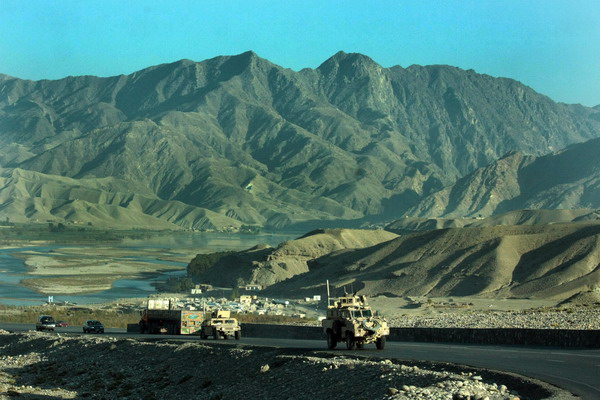
Our convoy.
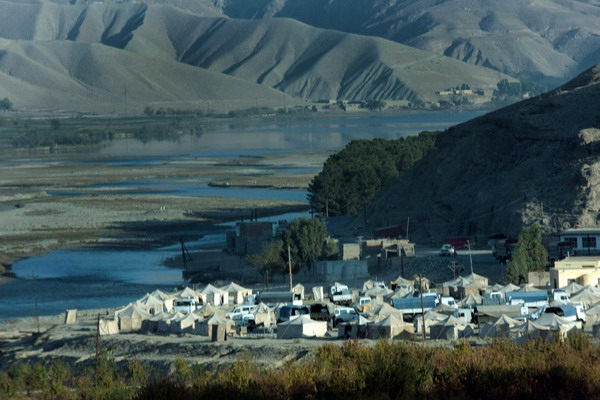
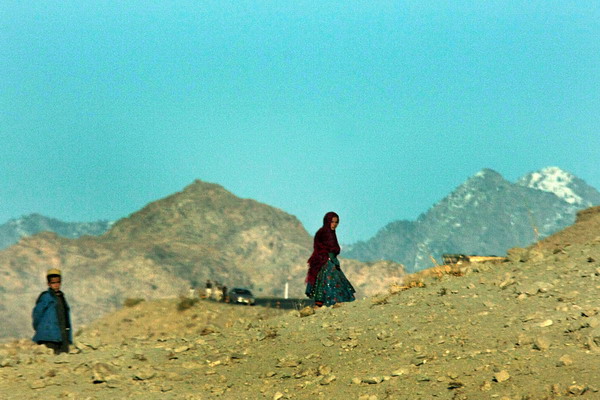
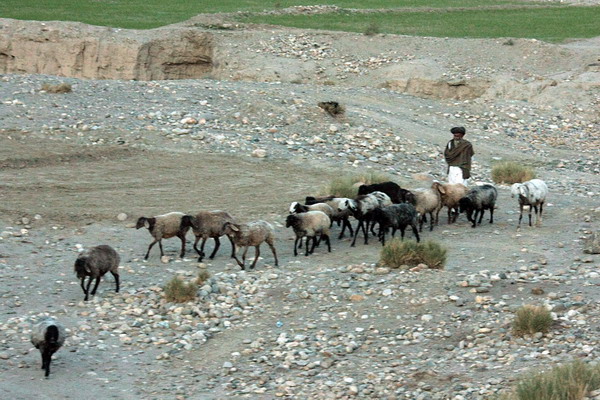
We love this billboard because it says so much, so well.
I love this picture of a young Afghan.
There are many more pictures that I will include in the next post. Also, these images are from several people on the team and the Chief was kind enough to help me clean up the images.
In case you can’t tell, I really enjoy being here. Although I wish I could spend the holidays with Anna and the rest of my friends and family, I feel this is a good place to be. My team and I are doing our best to help the Afghans and that is a good reason to be away from everyone.
So, until the next post…
–Jim
Savannah, GA
Well, after the last post, Anna flew in to spend a little time with me before I headed over to central Asia. So, we chose a destination that was relatively close, had a beach, and was relaxing. Savannah and Tybee Island in Georgia met all three criteria. So, off we went to reacquaint ourselves with each other and enjoy our brief time together.
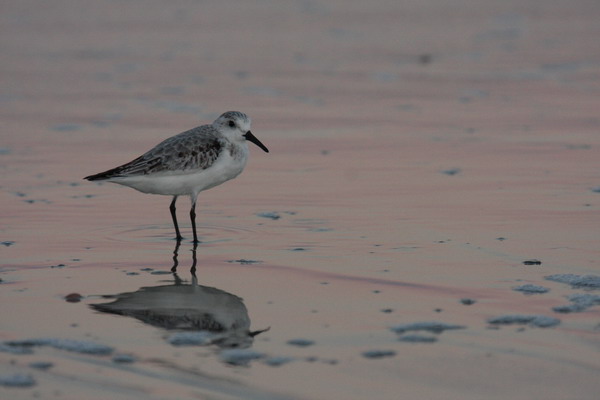
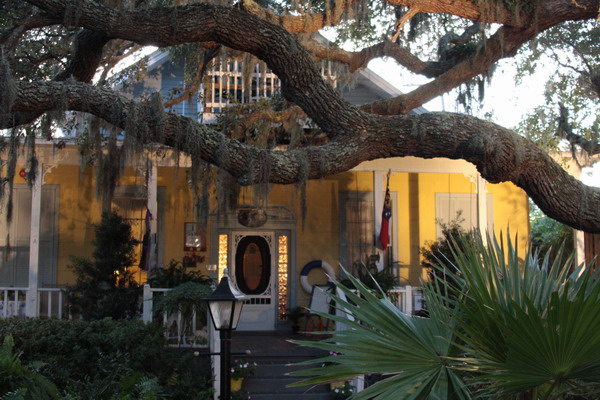
This is the first B&B we stayed at. Both were very romantic and exactly the sort of place we love to stay at.
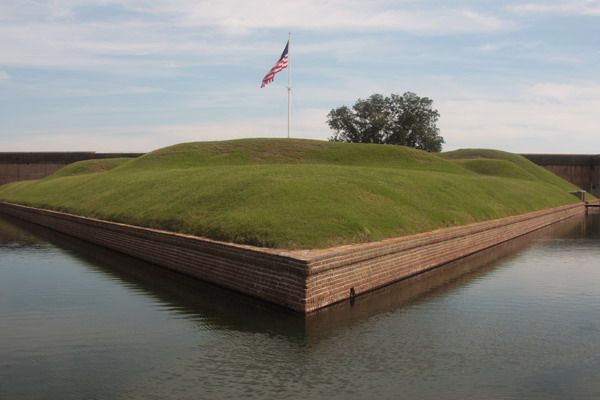
We also visited Fort Pulaski between Savannah and Tybee Island. This very well preserved Civil War Era fort was seminal in the advent of modern warfare. It was the first time rifled canons were used and it had devastating effects on the occupying confederate forces. The battle lasted 30 hours and ended when the shells began to land close to the fort’s magazine. Instead of risking complete destruction with a direct hit, the confederate forces surrendered. It’s also interesting to note that the fort was designed by a young Robert E. Lee. He came back to evaluate the fortification right before the battle and determined it was sufficient to withstand attack. Unfortunately, he hadn’t accounted for the long-range, accurate rifled canon fire.
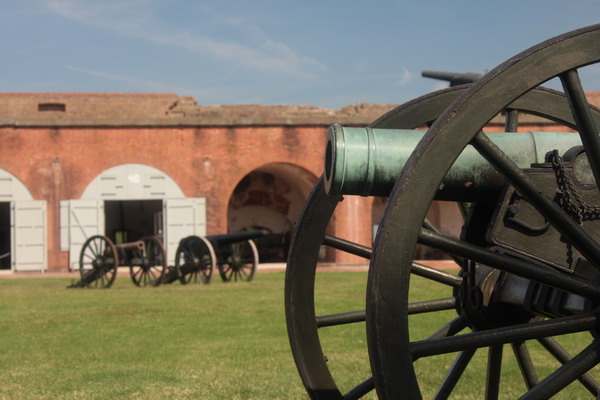
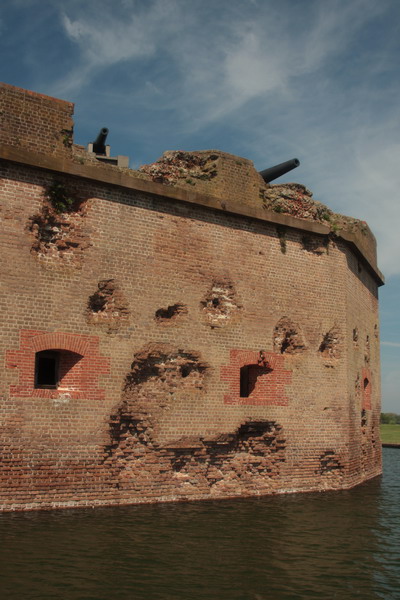
The exterior walls are still pock-marked with the damage from 1862. Portions where the wall was breached entirely was rebuilt, but the rest was left.
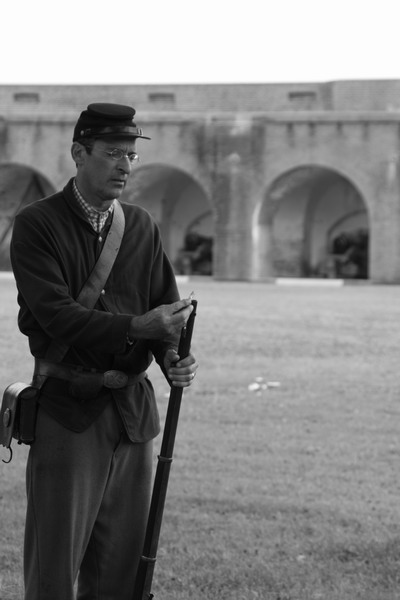
The interpretive portion was also fascinating to watch and included a period black-powder weapon firing.
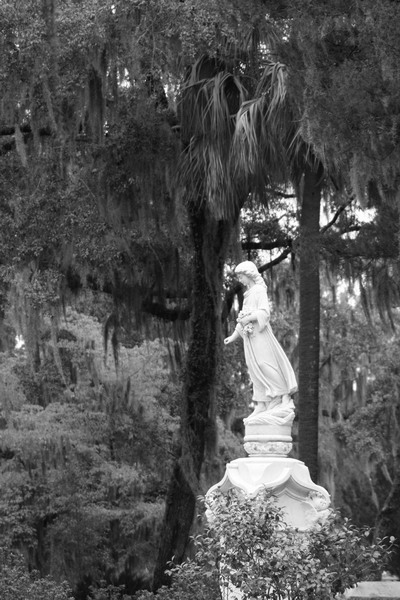
If you have read the book, “Midnight in the Garden of Good and Evil,” you may recall the famous Bonaventure Cemetery. Although I still prefer the immaculate landscaping and elegant symmetry of military cemeteries, this was a close second. It was very picturesque.
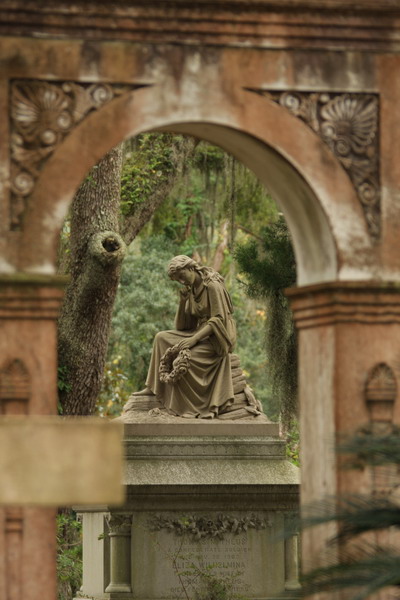
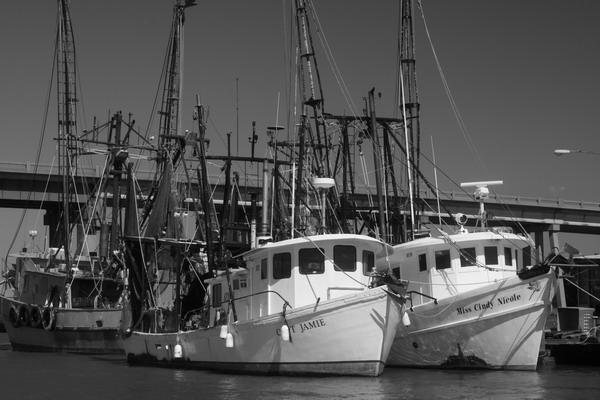
Our next activity was a boat ride out around Tybee Island, with the intent of finding bottle-nose dolphins. Unfortunately, we didn’t see any aquatic mammals, there were plenty of other interesting sights. These shrimping boats were taking the day off, probably because the weather was not very cooperative.
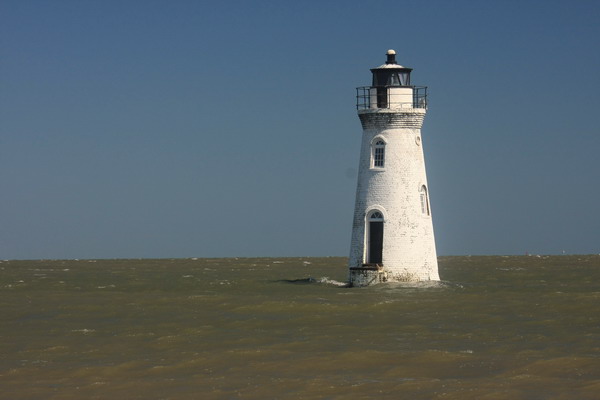
Although it appears that Cockspur lighthouse is built in the middle of the ocean, it is merely a 8′ tide that covers the approach. Construction of this beacon began in 1837, remodeled in 1848 by the same architect who built the Mercer House in Savannah, destroyed by a hurricane in 1854, temporarily extinguished during the civil war, survived the fusillade during the siege on Fort Pulaski, damaged twice more by hurricanes in the 19th century and finally extinguished in 1909. Interestingly, it was man, not nature that turned out the light. The channel that this lighthouse marked was too shallow for the new, larger ships. Eventually in 1954, it was transferred to the National Park Service, under who’s care it remains today.
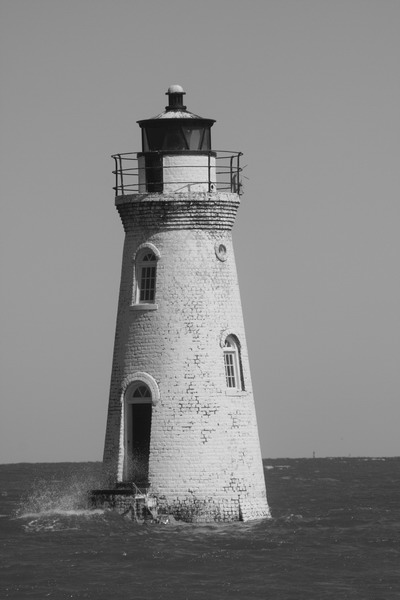
Another view of Cockspur Lighthouse.
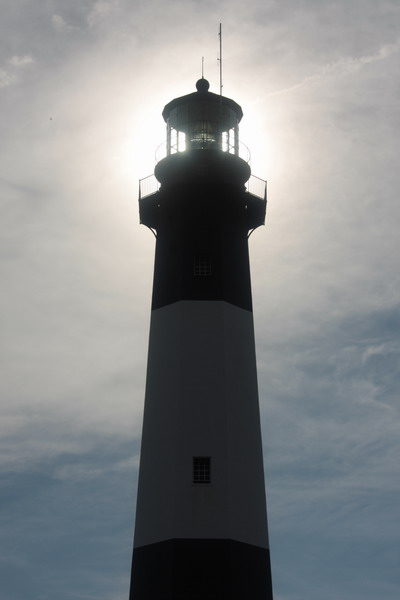
This, and the next three images are the much larger and older lighthouse on Tybee Island. It was first built in 1732 and has been rebuilt four times in its history. The current structure was erected in 1916. Anna and I climbed to the top and the view of the island was quite nice.
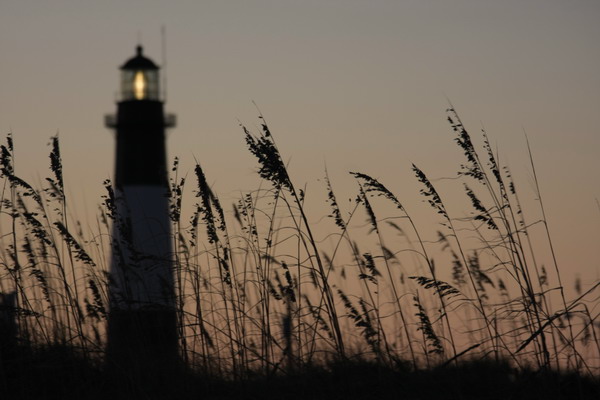
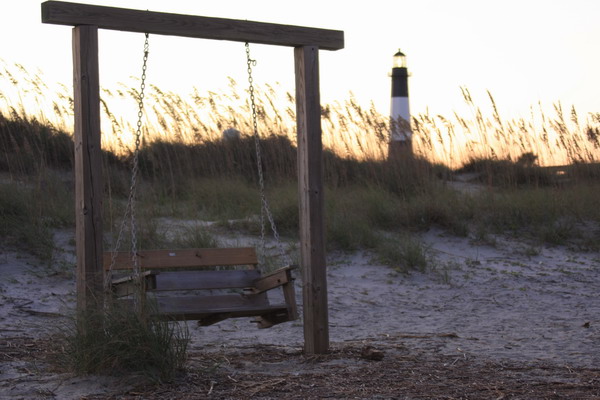
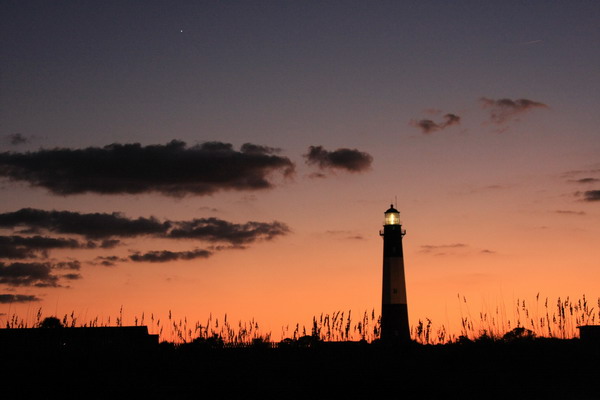
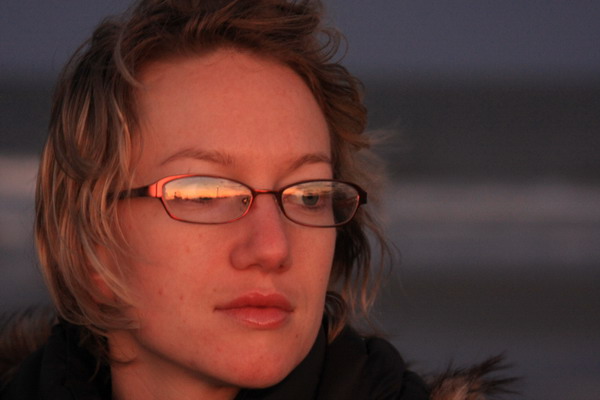
If you look close, you can still see the lighthouse in Anna’s glasses.
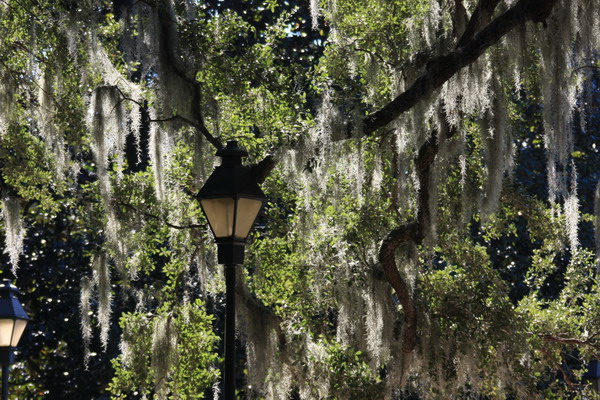
The Spanish moss is very pretty and covers many of the trees in region.
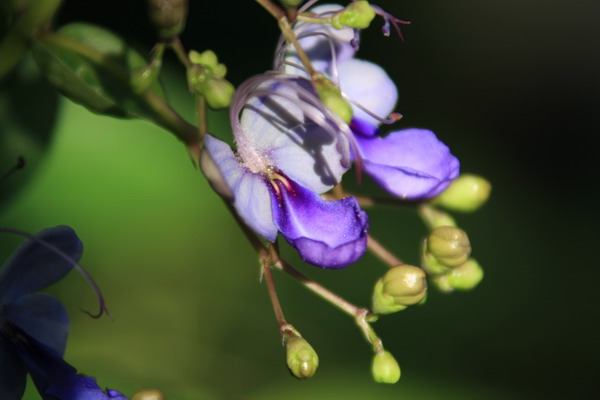
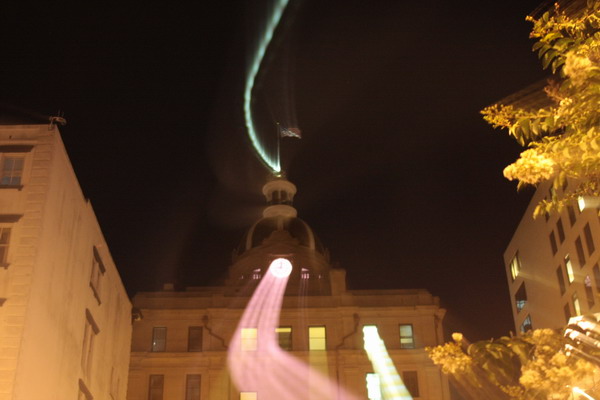
This is Savannah’s city hall. Although you can’t tell in this image, it has a very ornate gilded dome.
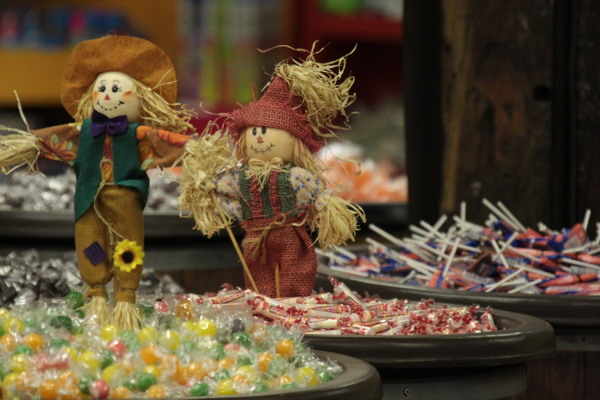
Happy Halloween! We also celebrated Anna’s birthday in Savannah. Although it was a couple days before her actual birthday, we decided that being together to celebrate was more important than marking the actual day.
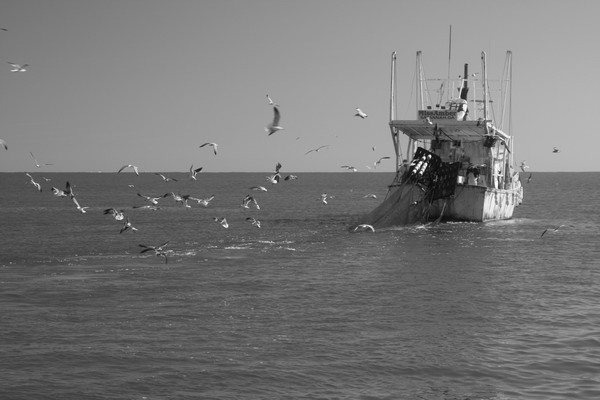
This is another shrimp boat, on our second attempt at dolphin watching.
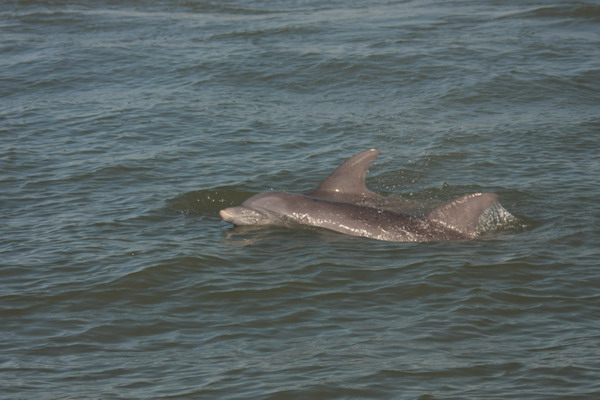
Success! But, unlike the spinner dolphins we saw in the Pacific, these bottle-nose dolphins didn’t put on quite the same show. I think they were more focused on feeding. We couldn’t blame them, and they were still fun to watch. But, despite taking MANY pictures, none were particularly spectacular.
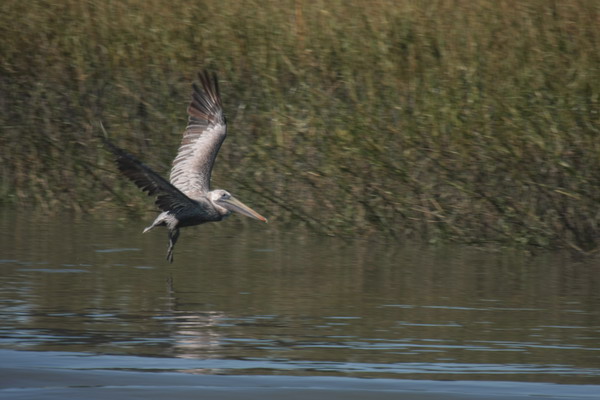
The pelicans were nearly as interesting to me as the dolphins.
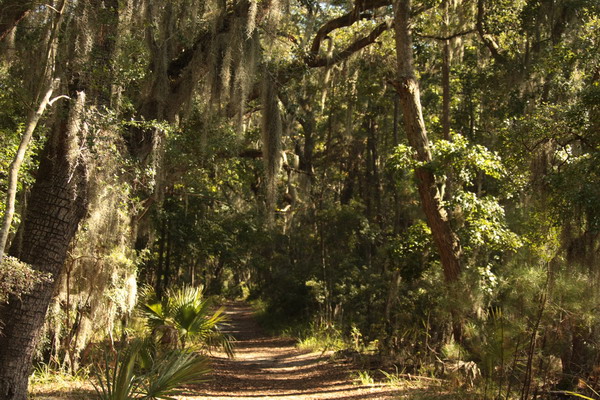
This trail gives a better idea of the flora in the region. We went hiking on trail in Skidaway Island State Park.
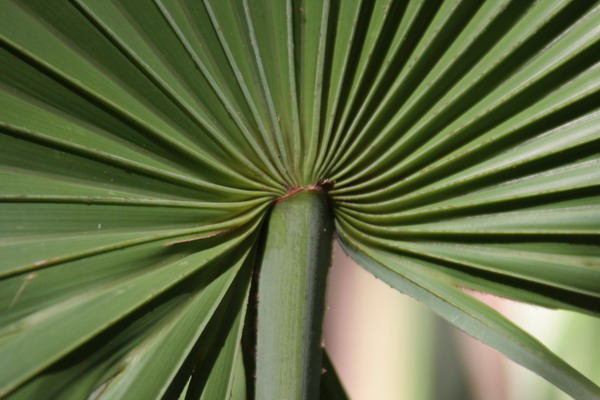
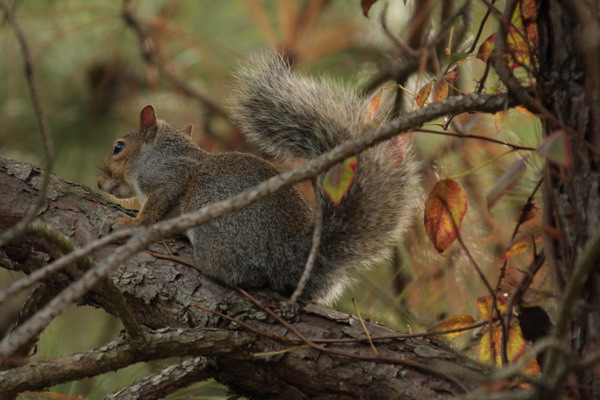

This American alligator had some serious camouflage going on.
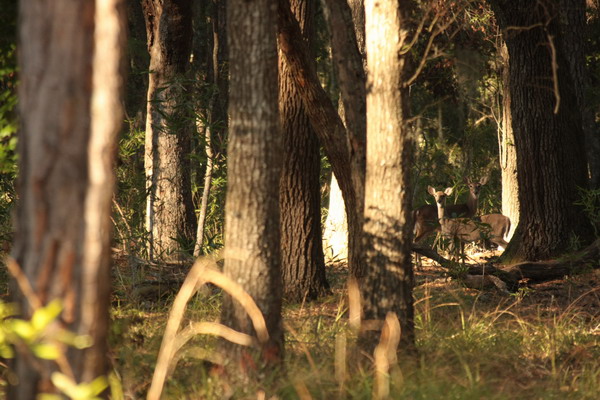
We also happened about nearly a dozen deer on our hike. These two were kind enough to stop for a moment and pose.
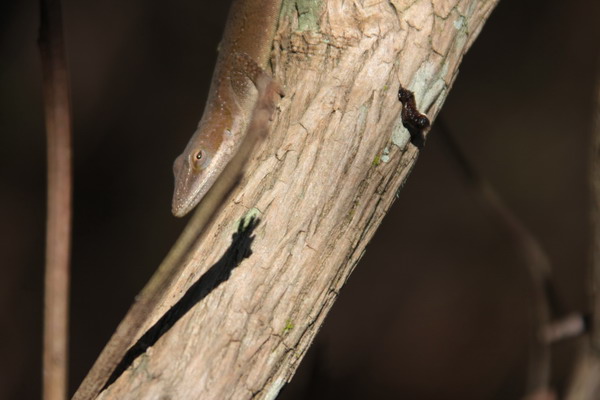
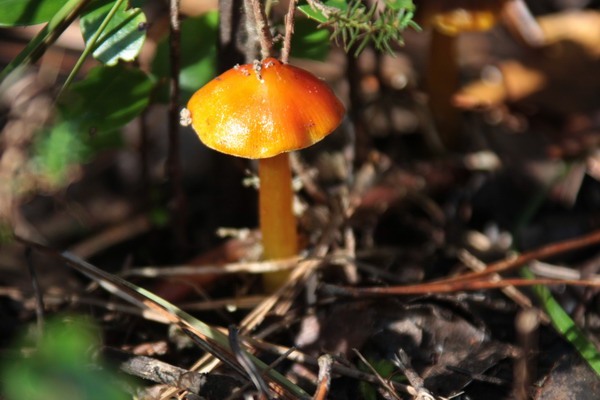
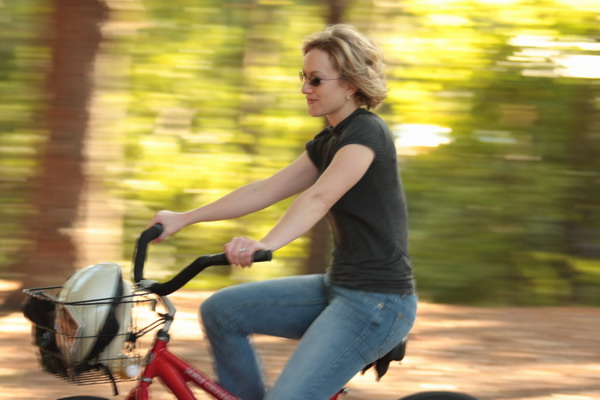
This image of Anna is from our bike trip around Hilton Head Island in South Carolina. We loved biking on the beach, lunch at a harbor, then back through perfectly manicured golf courses and ending the say with a quintessential American experience … shopping at an outlet mall (of course we bought a bunch of stuff!).
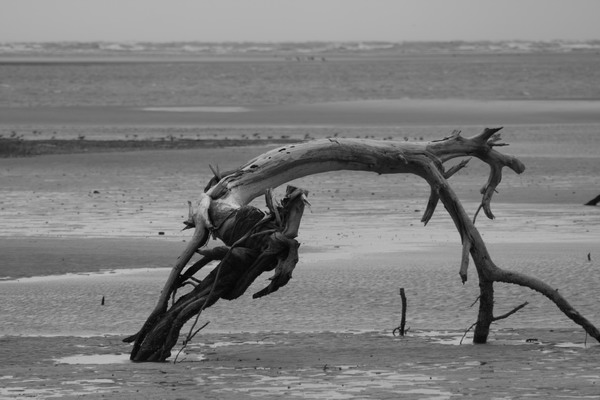
Our adventure quota was a little low on this trip. So, we rectified that with a final day kayak trip through the salt flats around Tybee. We also got out on Little Tybee Island here to wander around the driftwood and take refuge from the very strong wind, which we had to eventually face and paddle home.
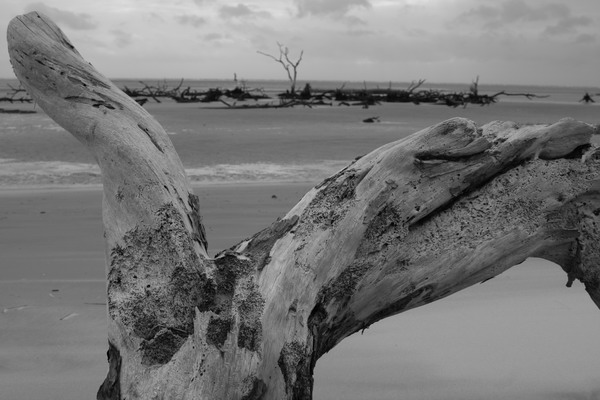
That sums up our trip together. It was a perfect experience and it was great to re-connect, relax and enjoy each other’s company. So, now, we have our own separate adventures to live for the next few months. Then, we will head off on another adventure together early next year, when I get a short break from my time in central Asia.
So, until the next adventure…
–Jim
Army Training, Sir!
OK, for those who have not heard, for all intents and purposes, I am in the Army for the next year or so. I have been training with the Army for a little more than 2 and 1/2 months now in Indiana, as well as North Carolina in preparation for a deployment to Afghanistan this fall. We began with language and cultural training at Indiana University, then moved to Fort Bragg in North Carolina for combat skills and mission specific training.
My team is one of the provincial reconstruction teams. Our mission is to help the Afghan government rebuild their country, economy and government. My focus on the team will be construction. I am very excited to be a part of this mission. We (and the thousands of other diligent military and aid workers) have the opportunity to affect a great deal of positive change for many people. 30 years of near constant warfare has taken an enormous toll on the entire country.
As for my time here in North Carolina, it’s been very valuable training, but certainly has included a number of ups and downs. We will continue our training for another month or so, then head to Afghanistan. As you can see, we focus on combat skills here. Our mission is to rebuild, aid and enable the Afghan government, so hopefully, we won’t have to use these skills, but we are learning them, just in case.
If you are interested in more details about our mission and training, the following links will provide more insight:
PRT Overview
‘Outside the Wire Mission’ Article –>I am actually quoted in this article.
‘Language Immersion’ Article
Deployment Preparation Article
An article about the current PRT
Another article about the current PRT
With all that background reading out of the way, allow me to present a few images from the first part of our training. Fortunately for me, our chief here is a phenomenal photographer (also happened to be one for the Air Force as well). So, these images are a combination of his and mine. He was very kind to share them with me.
As a format side-note, I will try posting my comments directly under pictures, instead of on top as they were in prior posts.
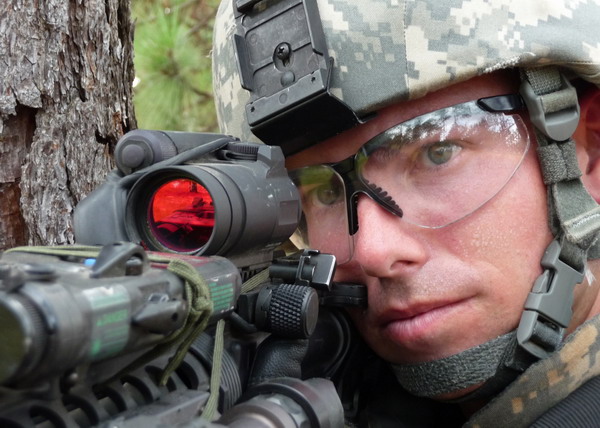
This is me looking through the sight on my M-4.
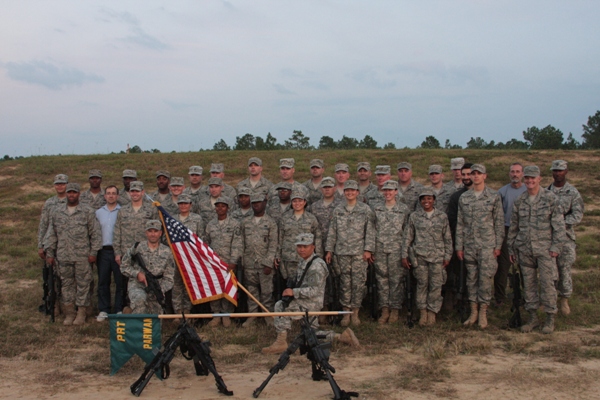
This is an image of the whole team
Now, for the title to this entry. It is homage to the continued relevance of the movie “Stripes.” For reference, it was released in 1981 and is a timeless classic. In fact, the barracks in that movie (along with just about any other released since WWII) are the exact same that we lived in when we first arrived.
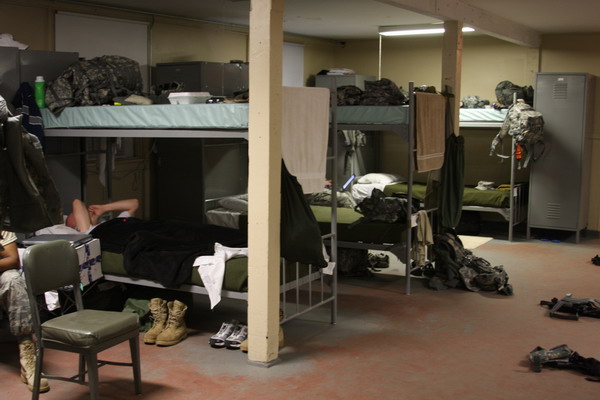
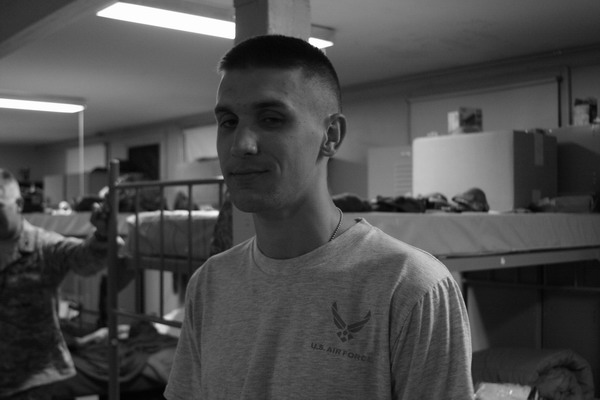
One of the other engineers, Joel, looks very happy to be there. Don’t you think?
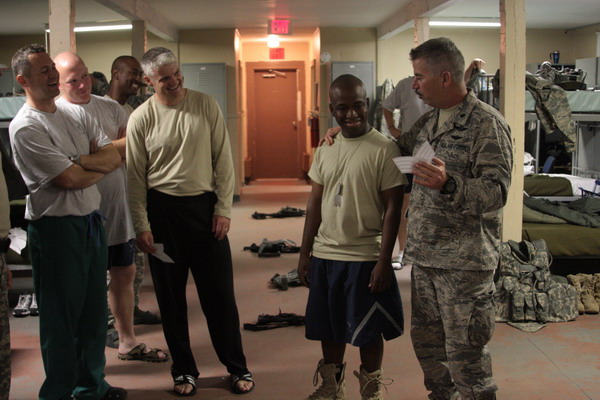
We quickly came together as a team. Here, you can see the Airman in the center was selected for promotion. The commander is congratulating him on a job well done to earn the advancement.
In the early part of our time here, we had specific training. During a session for the engineers, we got stuck in the middle of a micro-burst. It was nearly the intensity of a tornado, and experiencing that in a tent was… interesting.
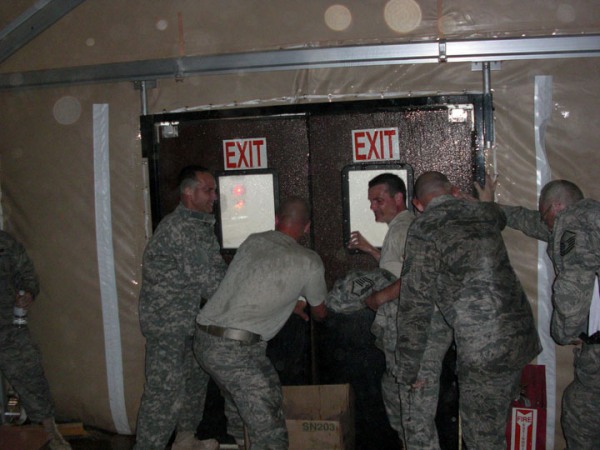
These guys are trying to hold the wall of water back. It was about 70 mile an hour wind, with rain and hail. Oh, and when we realized that holding aluminium poles with lightning all around wasn’t a good idea, we headed straight for the bus.
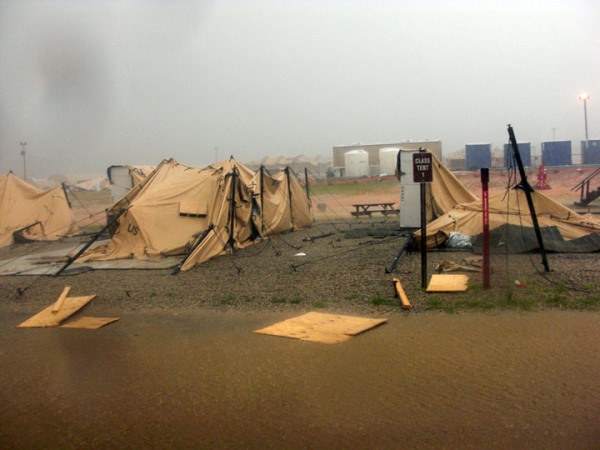
Here is some of the destruction after.
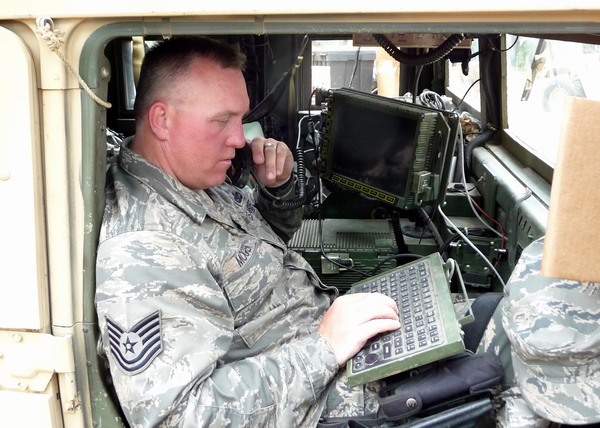
Multi-tasking in a HMMWV (AKA Humvee).
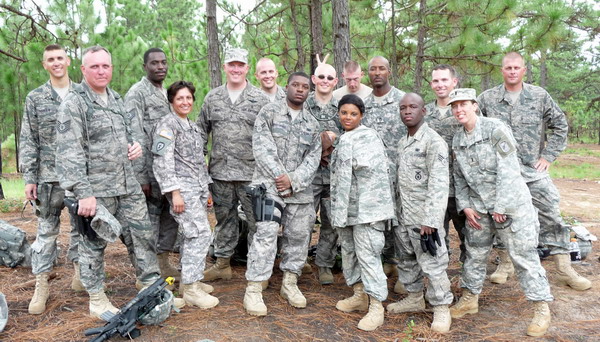
Part of the team after a long day of training.
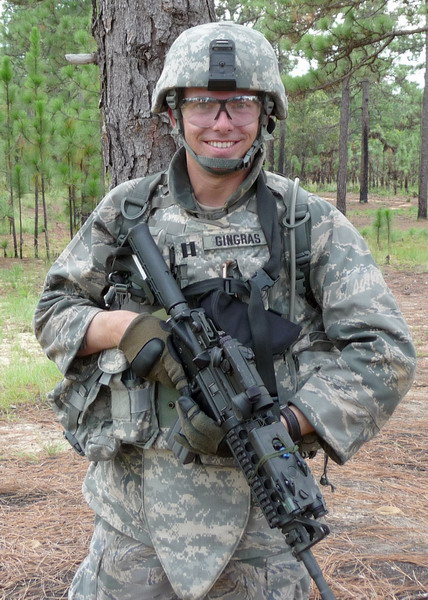
Fortunately, communication equipment normally works, even in the woods of North Carolina. It’s amazing that even in the middle of nowhere, you can stay in contact with the outside world.
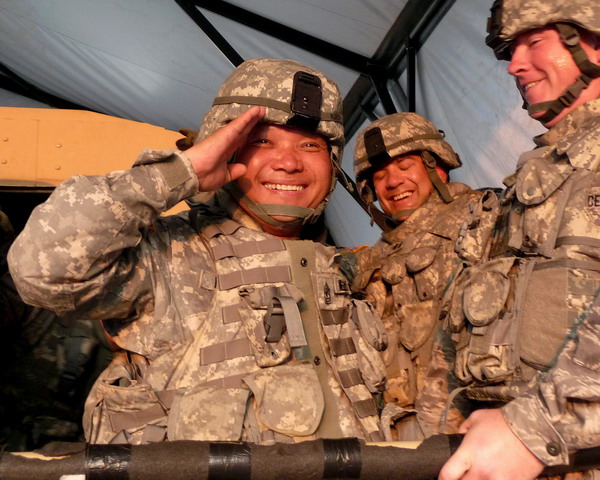
Top (the informal form of address for an Army First Sergeant) had a good time in this simulator. It taught us what to do in case of a vehicle roll-over, which is a very disorienting experience.
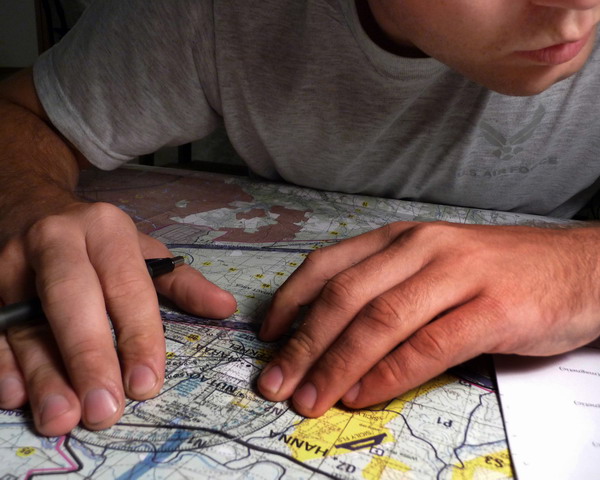
Map reading, and land navigation (both day and night) are essential skills that we reviewed and practiced.
We got a bit of hand’s on medical training. As you can see here, we began intravenous saline treatments on each other. There is much to be learned by actually doing it.
As you may be able to tell, I am less than thrilled going through this process.
MAJ Mundt, looking like the quintessential soldier.
These next two images are me working on a 50 caliber machine gun.
Everyone had to prove their ability to load, clear, disassemble, re-assemble, then function check several crew-served machine guns in a short amount of time. The only one that gave me trouble was the Mk-19, which seemed to have about 50,000 pieces. There is a picture of a Mk-19, a little later on, if you are interested.
Concentrating VERY hard.
More field training. This time with the M-4, the standard weapon we carry all the time.
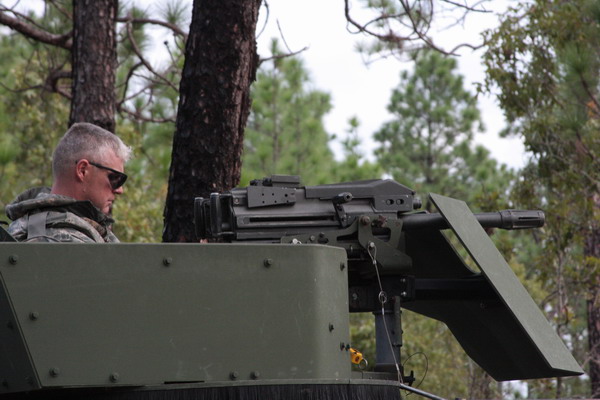
Here’s the Chief with his Mk19 on top of a HMMWV.
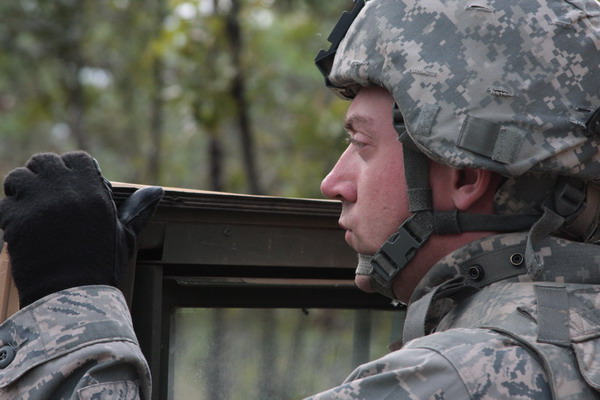
Daniel kept a sharp eye out during our base defense exercises.
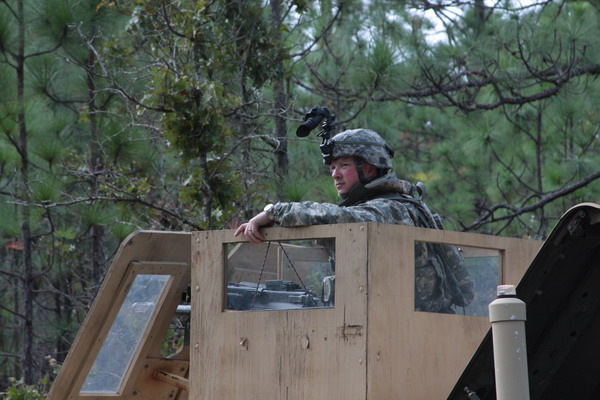
So did Matt, even at night.
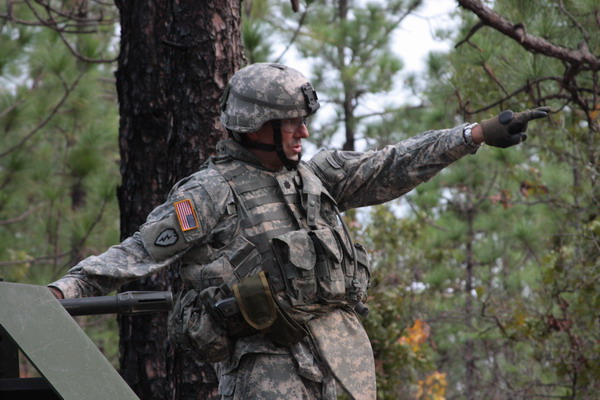
LTC Kenna giving us direction.
Sitting around, telling stories has been an essential part of our experience here at Ft Bragg. Actually, everyone that I have talked to and who have trained with the Army has said that.
For almost a week, the team was expected to sleep outside (instead of our normal tents). Oh, we spent several weeks in those WWII barracks, but then moved to a “Forward Operating Base” that consists of a number of large (12-16 person) tents. That is where we have resided for a while now… Here you can see the chief made the most of his time out in the woods and brought several creature comforts (no pun intended).
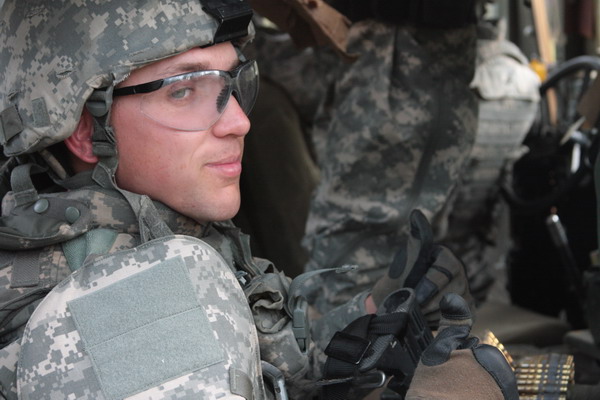
Joel was also ready to defend our base.
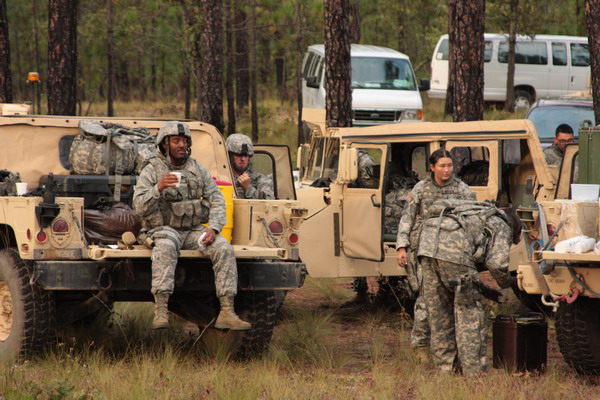
Our only place to relax for a few minutes during a lull.
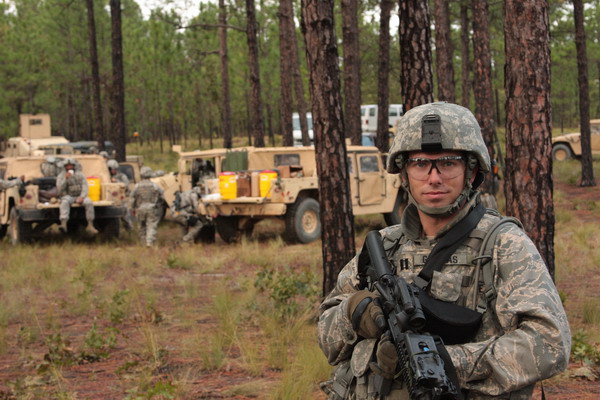
Yes, I too was ready to defend.
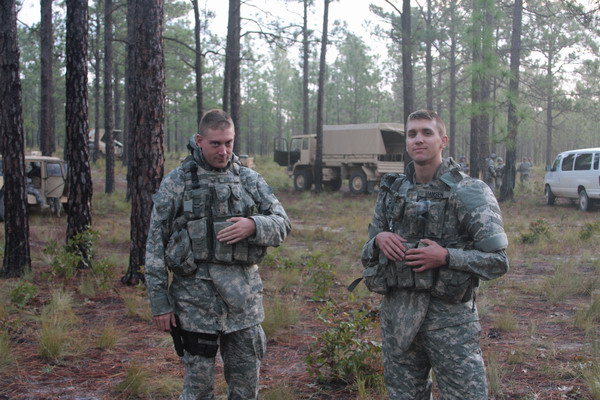
I know Daniel looks a little scary in this picture, but it was about 6 o’clock in the morning. We all look a little scary at that time of the day.
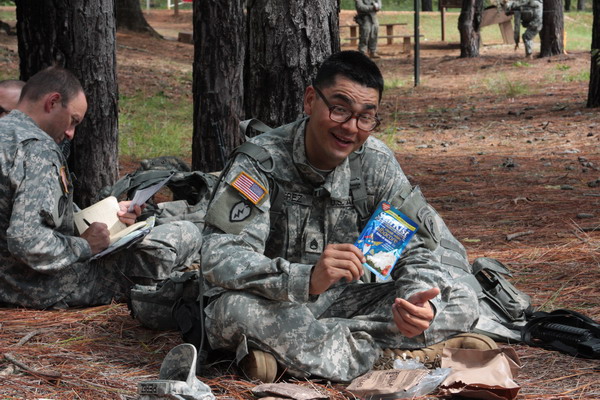
Nearly every day that we’ve been here, our lunch (and sometimes breakfast and dinner) has consisted of a Meal Ready to Eat (or MRE). These are pre-packaged food that is supposed to last for several years. In my opinion, they could probably survive in a nuclear winter. Although their quality has improved significantly over the last decade, it is no culinary masterpiece.
These next two images are from the Chief. He caught G-right and Slagle in the nice afternoon sun.
This is G-right
Slagle is enjoying his cigarette.
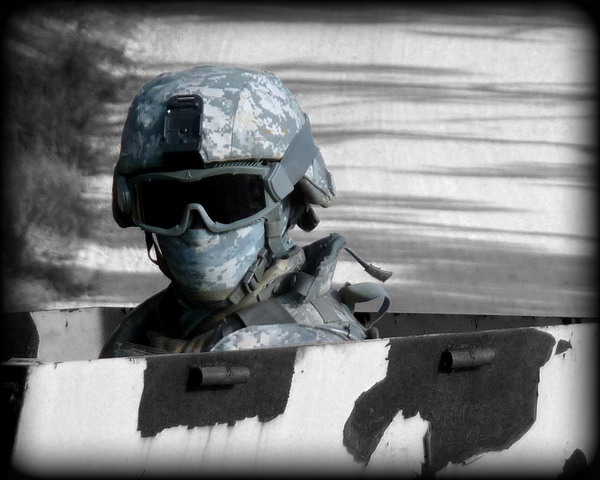
This is G-right again. This time he’s in his gunner’s turret of the Humvee. The chief did do some minor retouching to his image, as you can tell.
That concludes the training, as of right now. Next week, we have a big culmination exercise to practice all the skills we’ve learned. In the near future, we will head out to Afghanistan and use them for real.
So, until the next post…
–Jim
Wisconsin Part 2 — Lakes, Family and Wedding!
One of my best memories growing up is from my time at the Wiltrout Cabin on Moose Lake. This is where my Uncle David, Aunt Cheryl and cousin Chad had a great place. We spent a number of summers on the lake, enjoying the fishing, hiking, boating, swimming and family camaraderie available. Unfortunately, my Aunt passed away a couple years ago, but Uncle David has rebuilt the cabin to immense and very plush proportions. Anna had not visited this great location and I had not seen the new log-cabin Uncle David built. So, we took a few days and paid a visit. It certainly did not disappoint!

We spent time on the water, chatting with dear Uncle David about a host of topics and most importantly just enjoying time together.
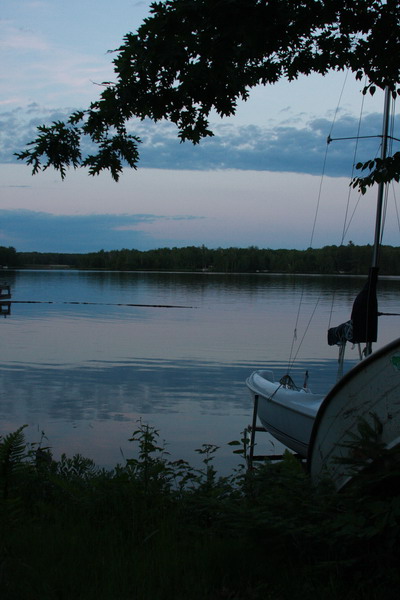
The lake and cabin have so many fond memories, I was very happy to share them with Anna.
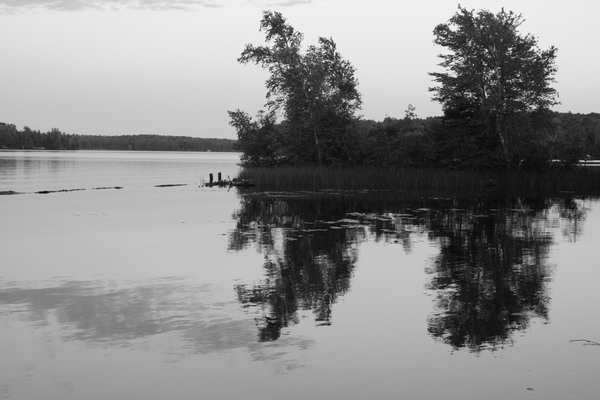
One great new addition is a pool table. This is great for all the guys who frequent the annual fall deer camp. Here is an image of Uncle David about ready to sink the 15 ball.
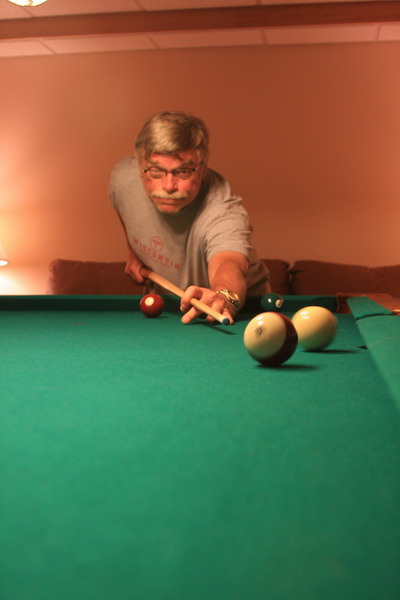
Anna too was quite the the shark.
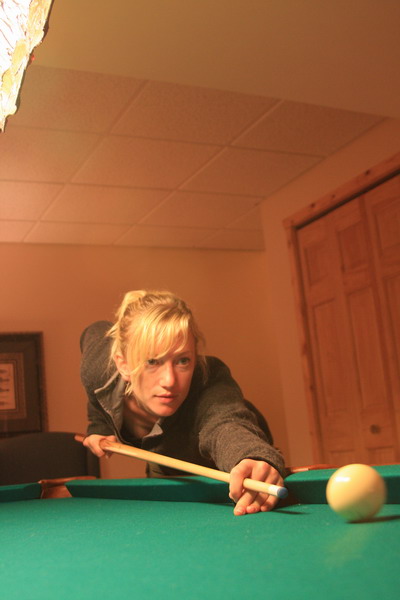
On our way up to Hayward (the closest city … about 30 minutes from Moose Lake, where the cabin is), there is a town called Cadott. This town has the claim to fame as the mid-point between the equator and North Pole (AKA 45 degrees North).
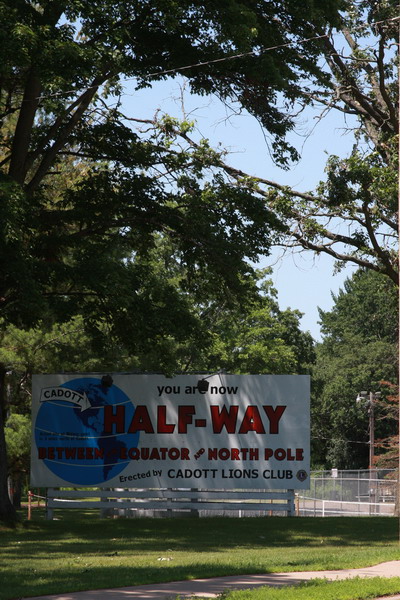
The day before Julie and Michael’s wedding, Michael genorously took the entire wedding party out on Lake Michigan to fish for salmon. It was a stormy morning and made for tough conditions, but we managed to catch a few fish. This is Patrick working on the first catch of the day. He landed a nice salmon.
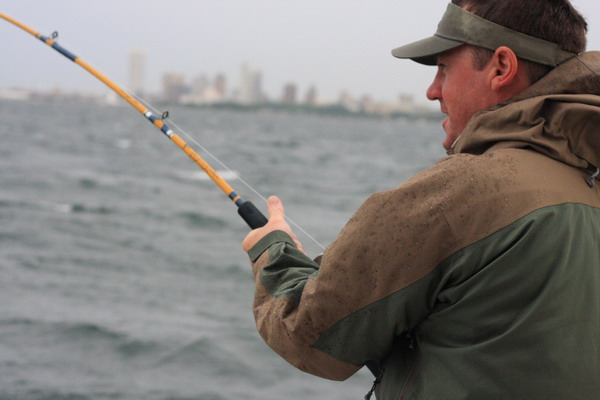
Here they are. These fish are much larger than the typical brown trout in the rivers of Colorado where Patrick normally fishes.
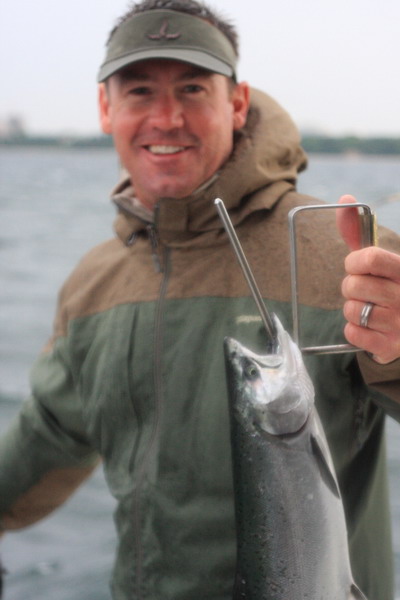
Clay was the big winner for the day and landed a couple beautiful salmon. Both were about 16 pounds and both took over a half an hour to get in the boat. We had visions of Santiago and the “Old Man and the Sea.” Fortunately, there were no sharks to spoil the booty and Clay successfully landed both fish.
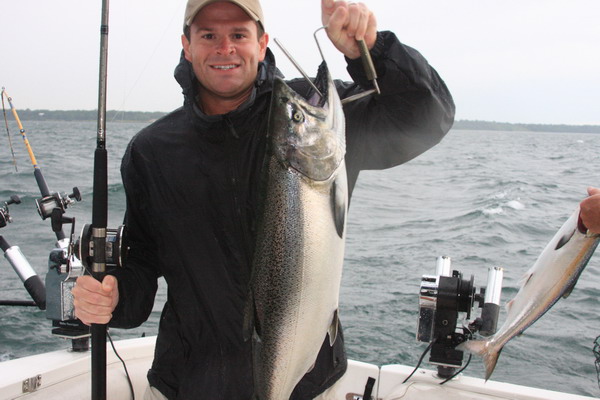
I was fortunate to catch a couple medium sized salmon as well. Of course, that is only because my father was gracious and let us young guys catch all the fish (he has the opportunity to go out on Lake Michigan at least once a year).
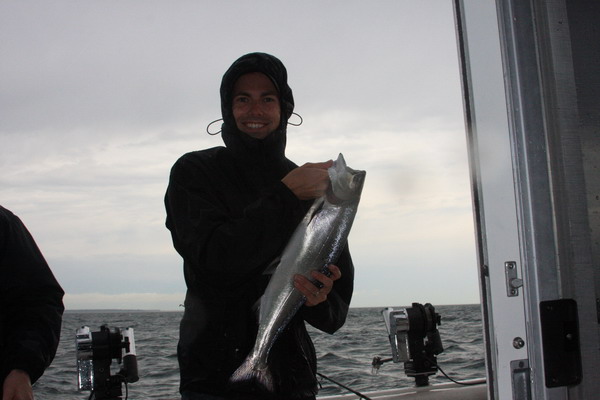
Here is Clay playing Santiago again…
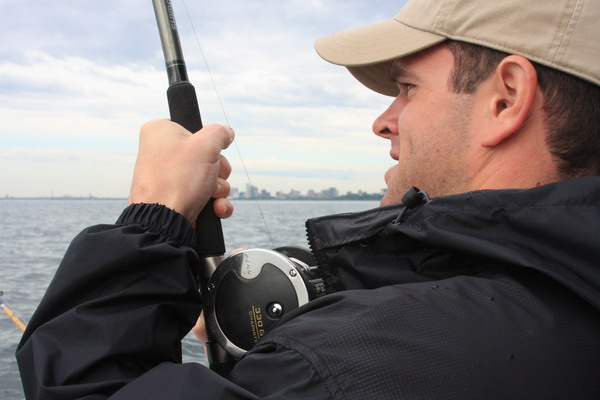
Me with my second catch of the day.
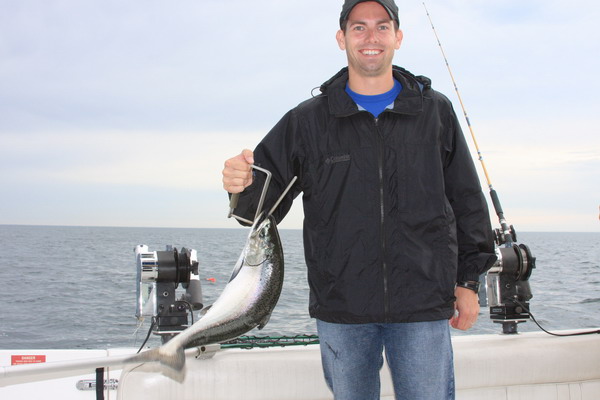
Here is the entire catch of the day. Although not the most prolific day on Lake Michigan, it was certainly rewarding. We really enjoyed our time on the lake.
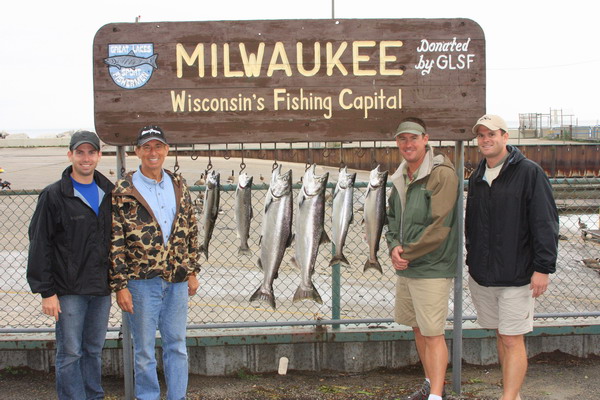
You may be wondering what happened to the man of the day, Michael. He and several other guys were on the other boat. Although it pains me to admit it, they were slightly more successful than us on the lake and wound up with 8 fish between them. 🙂 Ok, so it doesn’t really pain me, but a little friendly competition was fun.
The next day was the whole reason Anna and I were home: Julie and Michael’s wedding. Here is an image of the male cousins: Chad, T, and me.
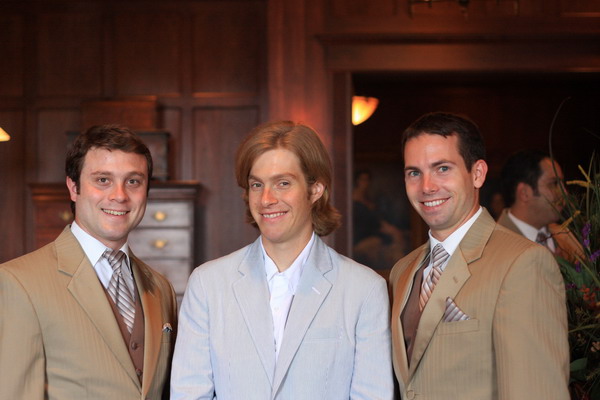
This is the groom, Michael and one of his two best men, Omar.
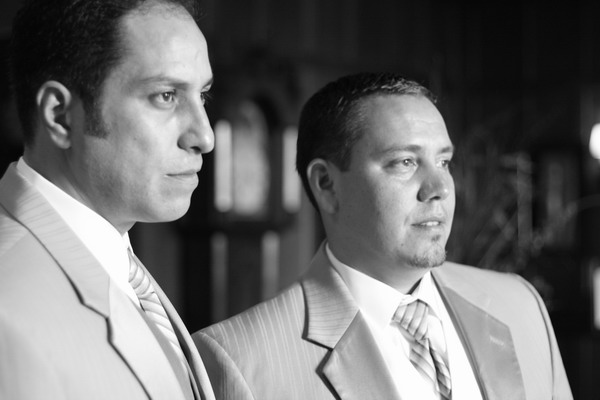
This is Michael and his other best man, Brandon, with Chad in the background.
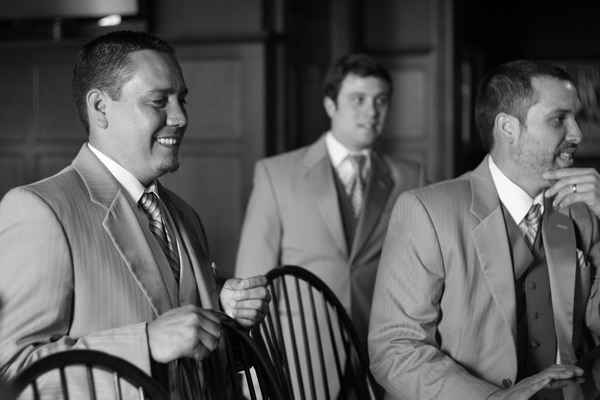
The beautiful bride, my sister Julie, on her way to meet my future brother-in-law, Mike.
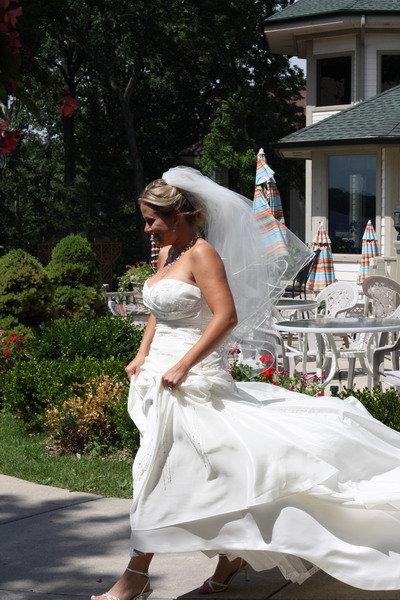
The happy couple.
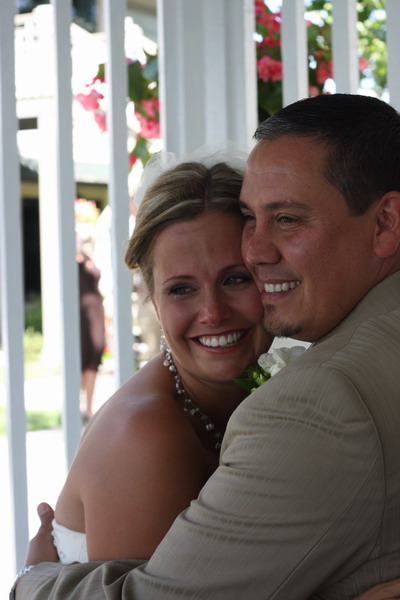
Can you tell they are happy to see each other?
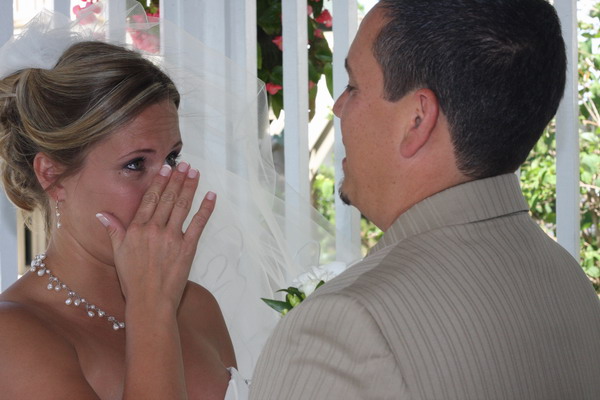
The ceremony was on the lake my parents live on, Nagawicka Lake. There was also a sailing regatta the day of the wedding.
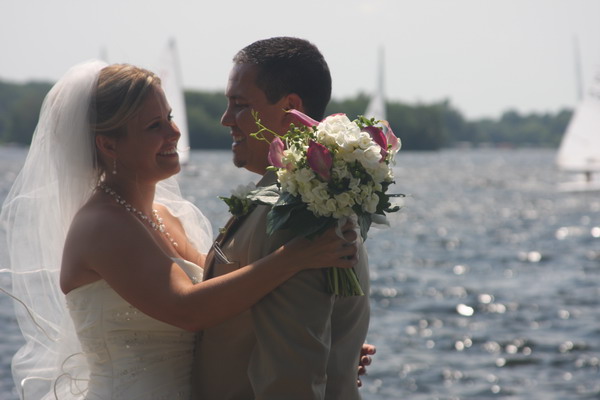
Their official photographer was very creative with her images.
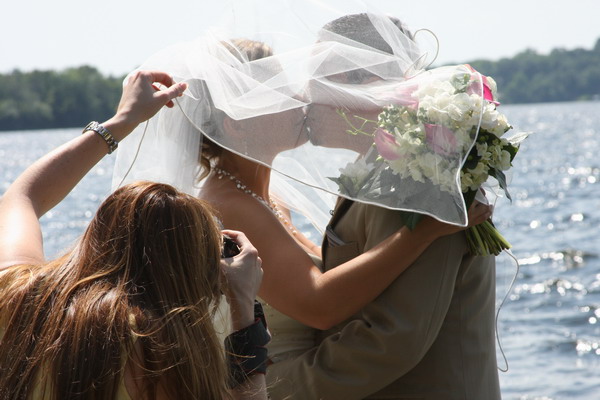
The happy couple again.

It was a great ceremony. Anna and I were proud to be a part of it. Julie and Mike make a great couple and we are certain they will enjoy their wedded bliss for the rest of their lives. We were fortunate that our schedule allowed us to partake in this auspicious occasion.
This was a fitting end to our trip to Wisconsin. A wedding and image of the symbol for the country I have sworn to defend. The next post will most likely be in my training for Afghanistan. In case I haven’t told you in person, I will be a part of one of the provincial reconstruction teams in Afghanistan for the next year. First though, we have language and cultural training at Indiana University. Then a few months of intense training in North Carolina. Finally, this fall, we will arrive in Afghanistan with the intention of aiding the Afghan people rebuild their country and infrastructure. It will be a long time and difficult mission, but I am excited to be in a place where history is being made with the opportunity to help positively influence the outcome.
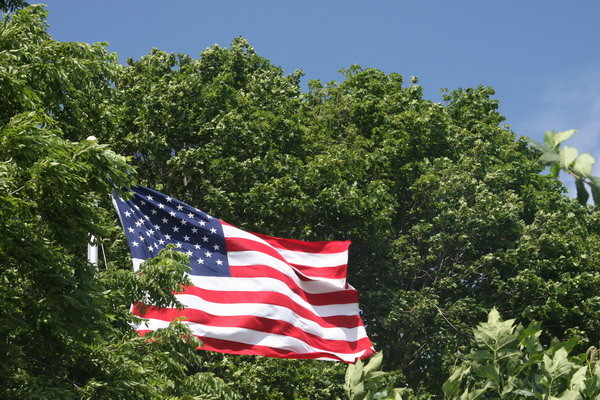
So, until the next adventure…
–Jim
Wisconsin Part 1 — Fireworks, Family, and Baseball
When Anna and I stepped off the plane from Germany back in Wisconsin (after almost a 2-year absence for me), we were met by my parents. It was the 3rd of July and Milwaukee had a huge fireworks display planned. So, we hopped in the car and headed to the Lake Michigan shore to watch the festivities.
Once we arrived, the Quadracci Pavilion of the Milwaukee Art Museum greeted us. It’s a beautiful addition to the museum created in 2001 by architect Santiago Calatrava.
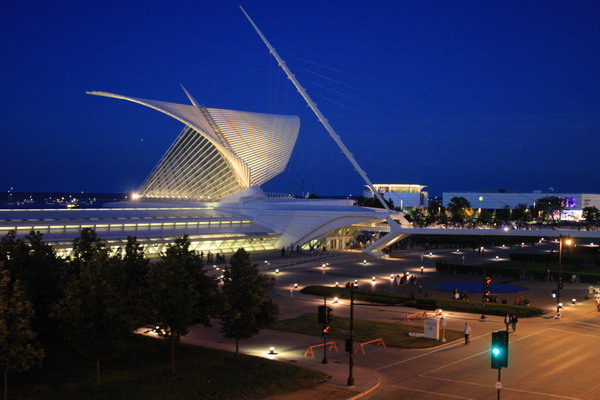
Here are a couple images from the 10,000 explosions that reportedly cost over $400,000 over 45 minutes with three distinct segments.
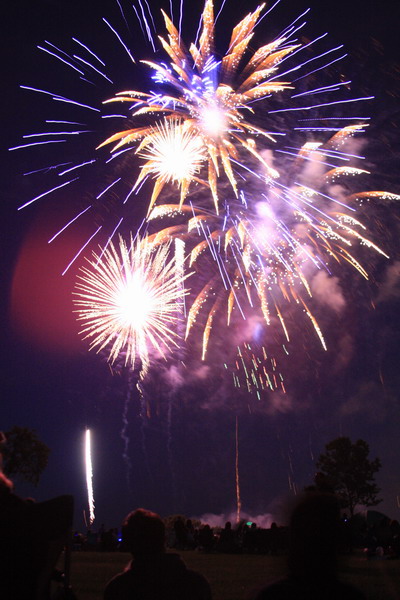
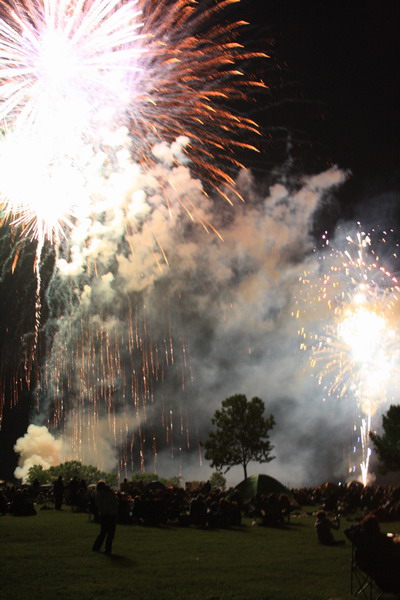
It’s amazing what you can find in your own back yard. Especially when you have parents that have a green thumb!
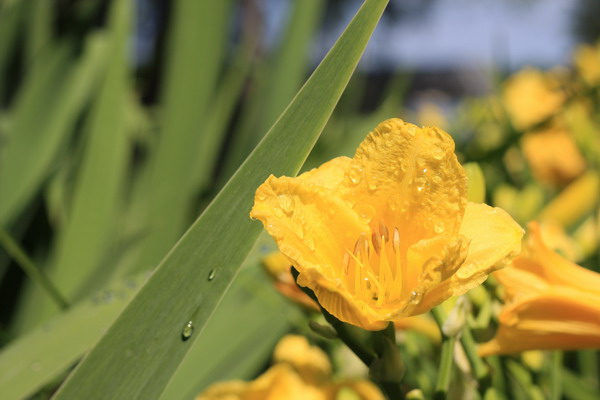
This next set of images are from Anna’s family. We spent the day with Sarah and Jason, Anna’s sister and brother-in-law, along with Susan, and her children, Anna’s oldest sister.
This is Caidub, Susan’s oldest son with a monarch butterfly.
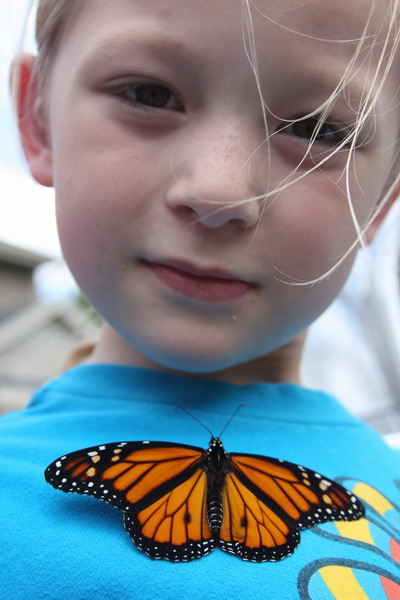
Here is Grant, our Godson.
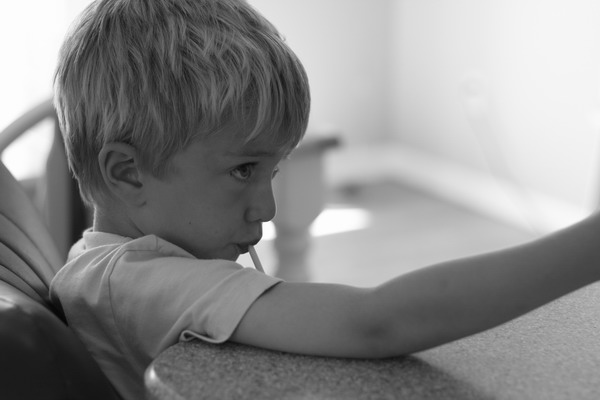
This is Griffin and he’s quite a character already!
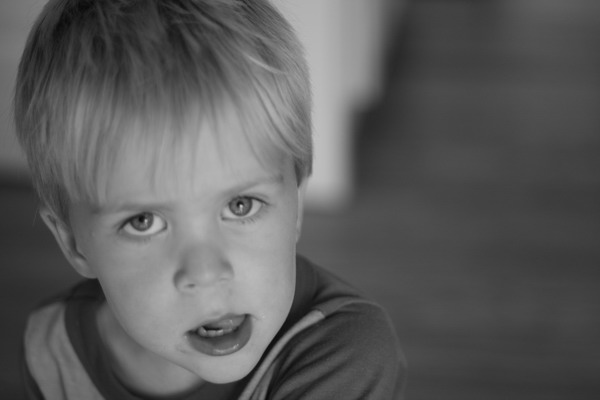
This is Jason, my brother-in-law looking quite dapper in a image made by Sarah. 🙂
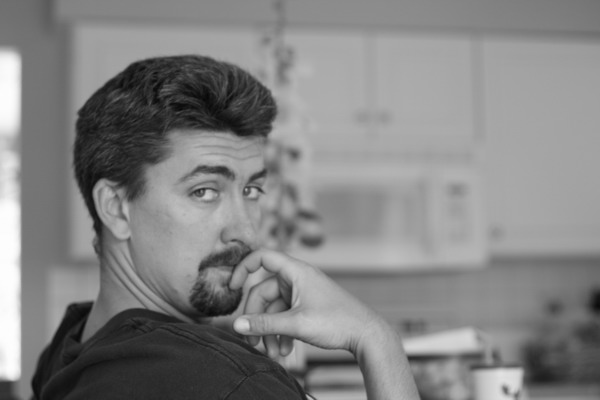
Another image by Sarah: Anna consoling Grant…
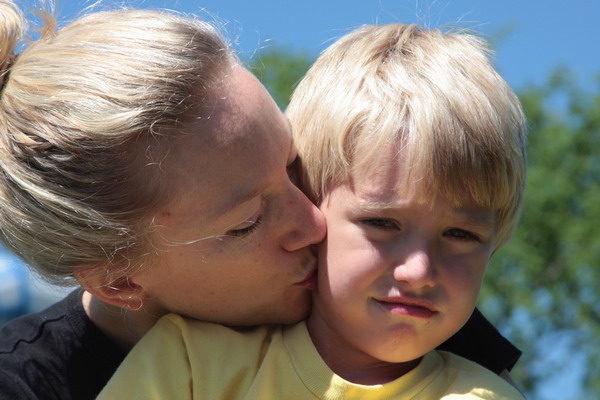
This is Gracie, about to release another new-born monarch butterfly.
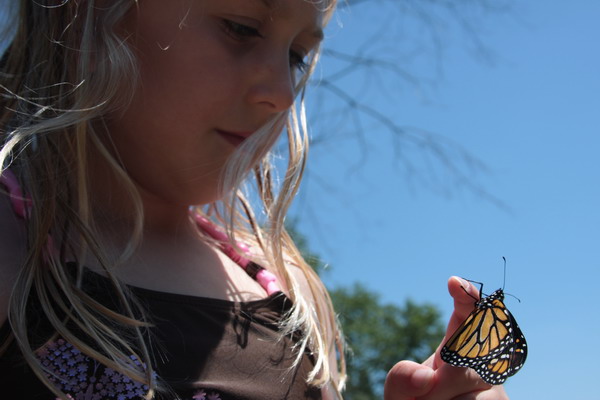
This is the wonderful Miller family in their bi-annual family portrait I helped capture.
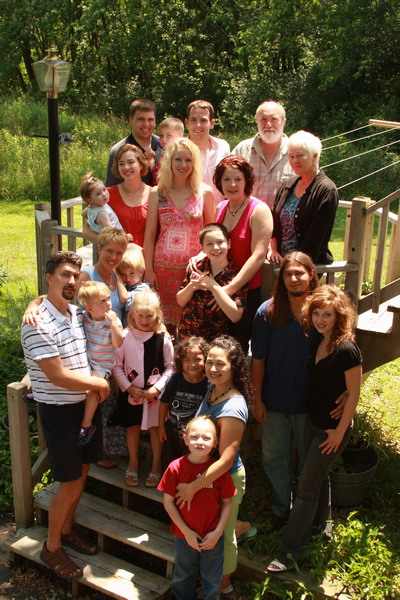
The Six Miller girls, although all but two have new names these days.
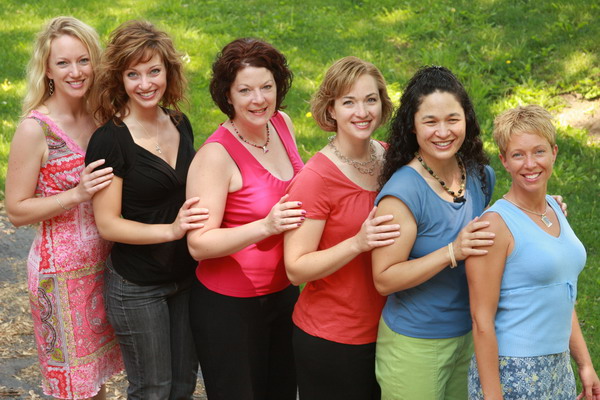
Sarah being silly, as usual. 🙂 Aren’t the Miller girls cute??
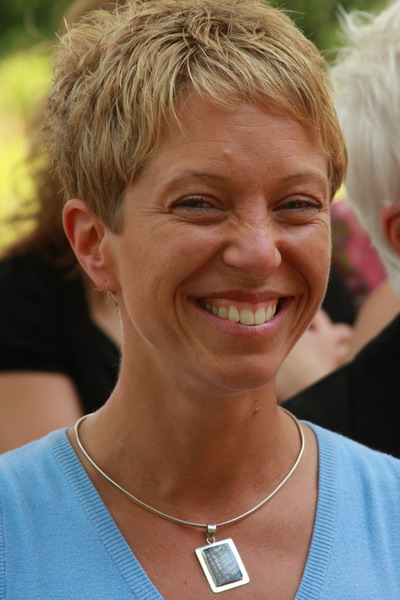
Another image of the Miller girls with their matriarch, Chris.
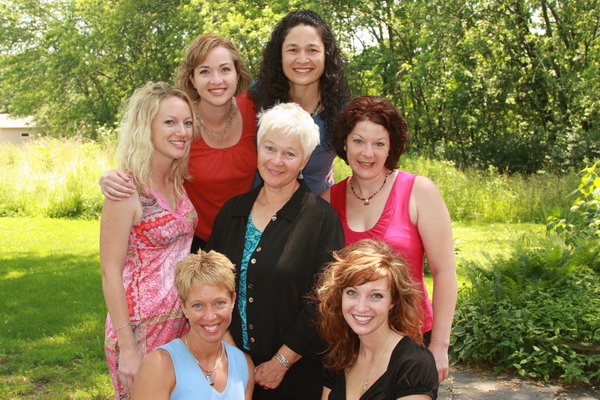
The eternally effervescent Emma.
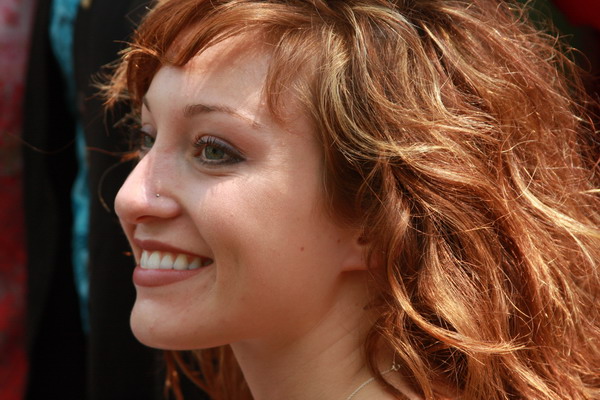
The leader of the flock and my mother-in-law, Chris.
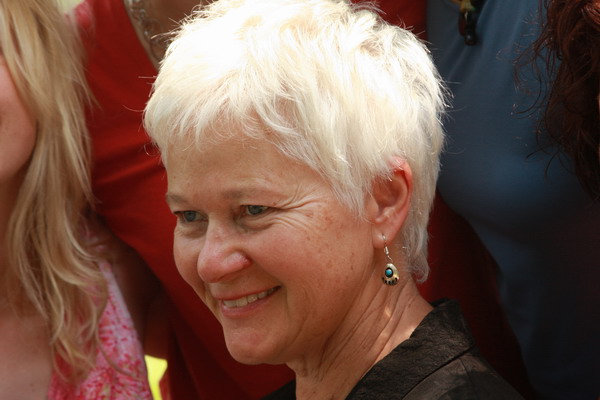
The most beautiful woman in the world…
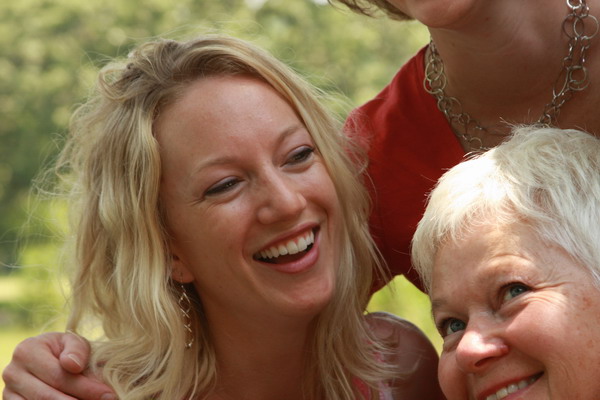
Since it had been a couple years since I was in Milwaukee, my parents wanted to take me out to the ballgame. I hadn’t been to the new Miller Park (no relation to my great in-law family). We watched the Milwaukee Brewers take on the Colorado Rockies.
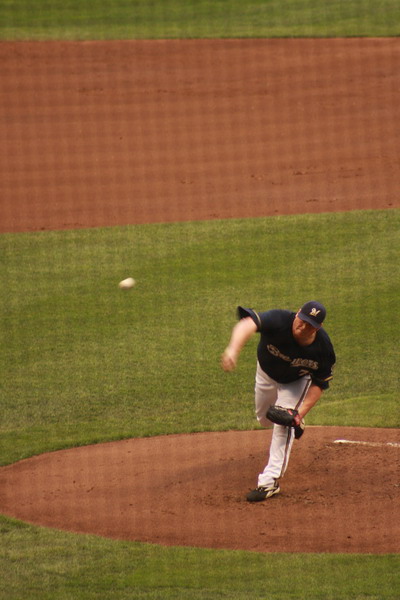
It was a great game with lots of intensity.
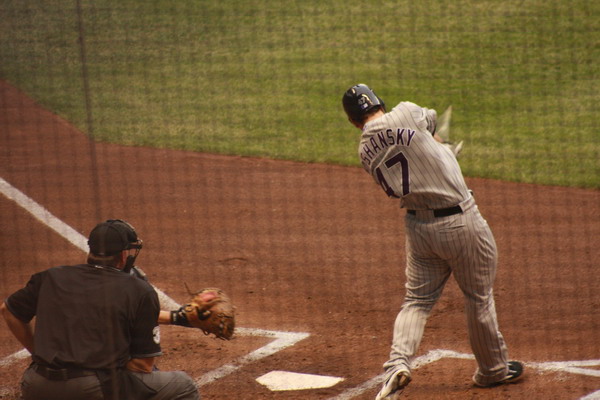
Unfortunately, the Brewer’s late-game surge was insufficient to win the day, but it was a great game to watch.
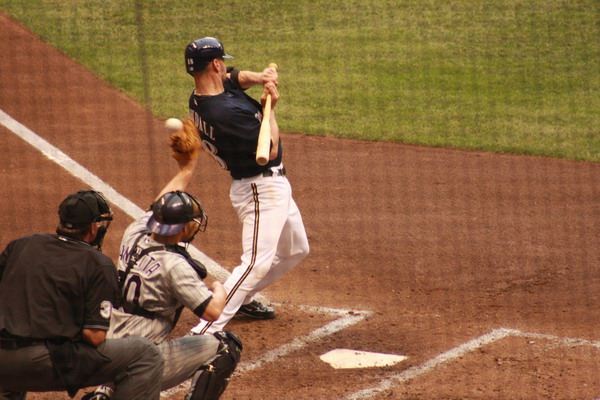
My parents were very thoughtful and requested a giant screen message to me, my Airmen and Soldiers. We are currently training for a year-long mission in Afghanistan (for those who don’t already know). It was a great reminder that everyone back home is pulling for us.
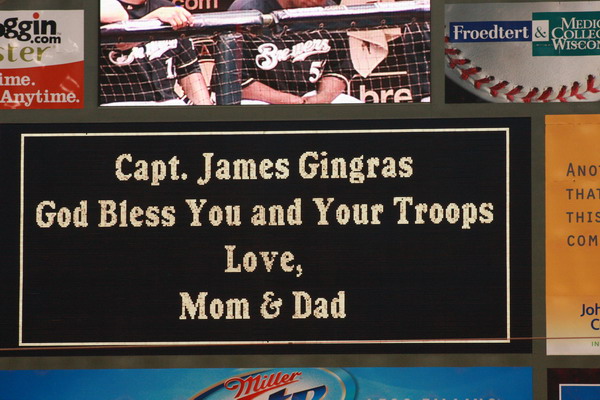
I will finish this post with a couple classic Wisconsin images. Although Wisconsin used to lead the nation in % of over-weight people, they have slipped to about middle of the pack. Currently, Mississippi leads the way with overall fatness, and Colorado is the leanest. However, that didn’t stop a number of large people from attending the game. It was quite a contrast from Europe.

Drinking Miller Lite in Miller Park watching the Milwaukee Brewers.
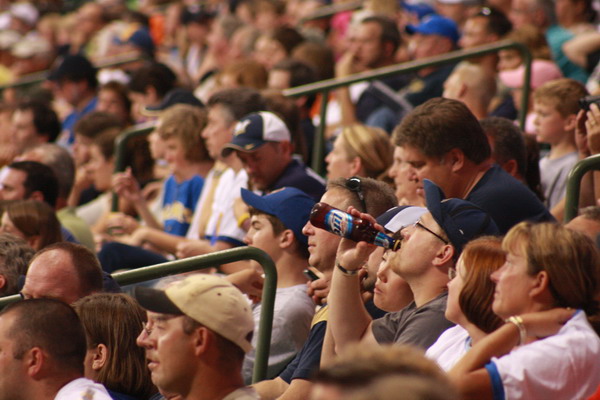
It has been too long since we were in Wisconsin. I really enjoyed my first few days back in my native state.
Next up is the our trip out to the lakes and most importantly, Julie and Michael’s wedding.
So, until then…
–Jim
Swiss Alps
For our last European vacation together (for a while), we decided to visit the Swiss Alps around the city of Interlaken. Since this is the same area we visited last year, we decided to try a different valley nearby and stayed in the village of Grindelwald. As you may recall, we stayed in the carless village of Mürren last time. Grindelwald is certainly laden with more cars and consequently tourists, it is still spectacular.
On the drive in, this is the sight that greets visitors, the Thunersee.
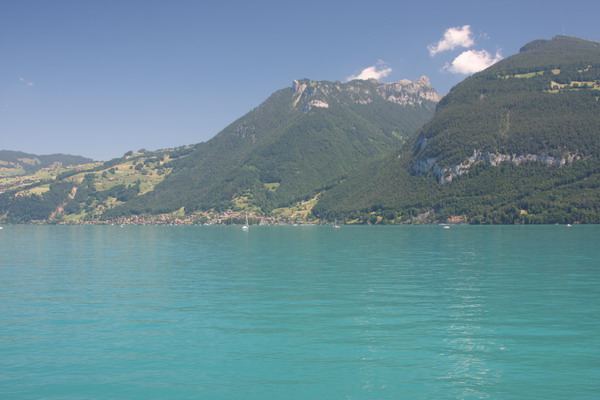
Jen got down to test the water. We decided to hold off on swimming, but it was very pretty water.
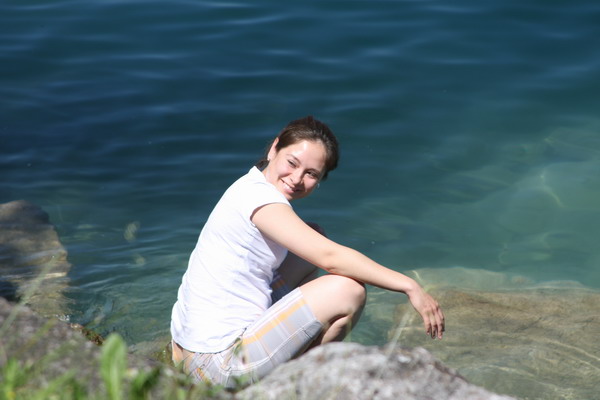
These next few images are from our drive.
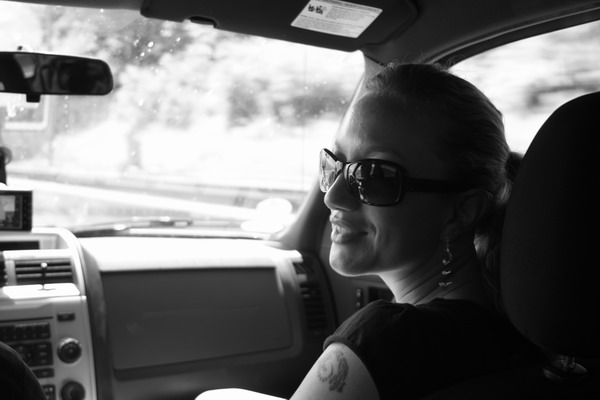
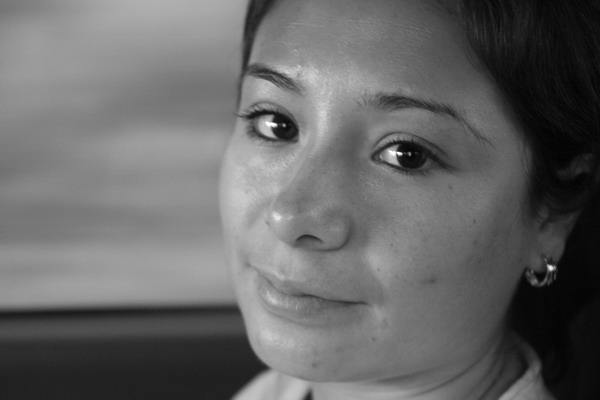
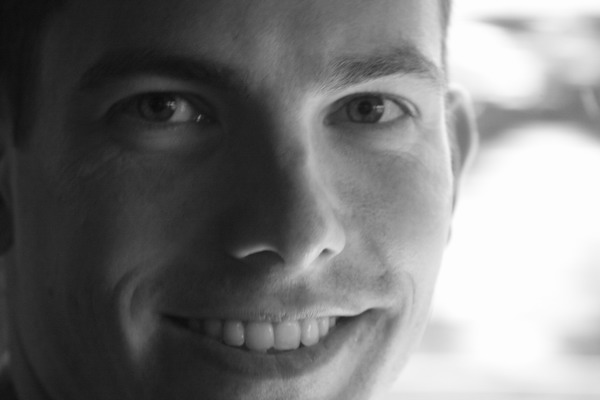
When we arrived in the Grindelwald valley, this view of the Eiger Mountain was amazing. It rises 10,000 feet out of the valley floor to it’s summit at over 13,000 feet.
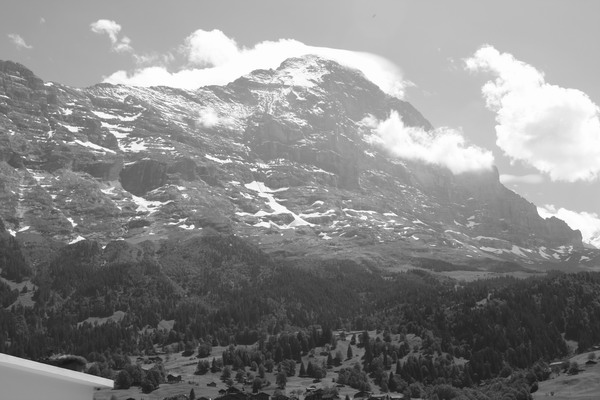
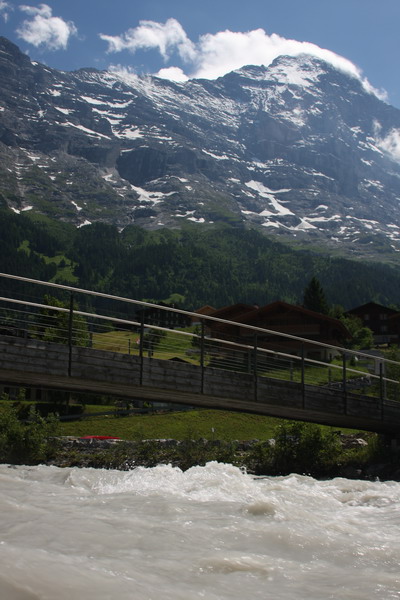
Another image of the picturesque Grindelwald.
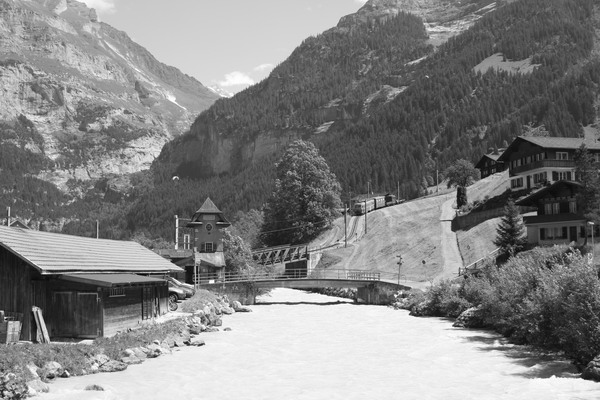
Another typical Swiss home.
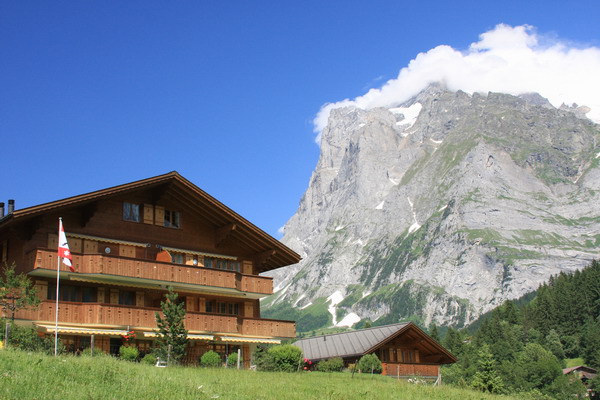
We hopped on one of the many gondolas for a hike in the mountains.
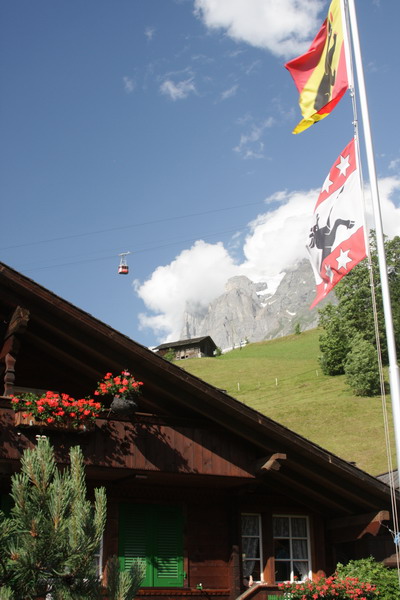
This is the view from inside the gondola.
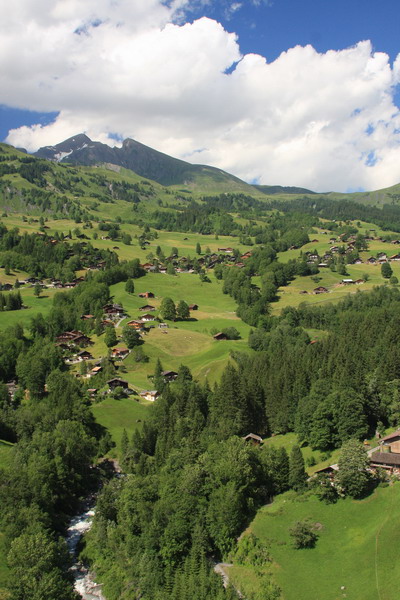
At the top of the lift, this cow said hi with the ever present cow bell. What you can also see in the right foreground is a land luge course, called a rodelbahn. To give you an idea of what it’s like, this YouTube video does a nice job Swiss Rodelbahn Video
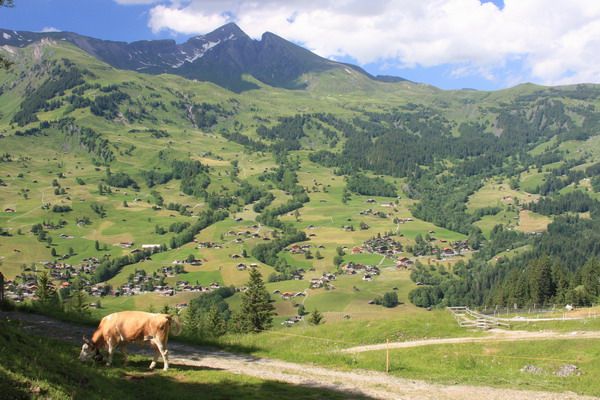
After the thrilling luge ride, we decided to stretch our legs and took a hike along one of the many trails in the area.
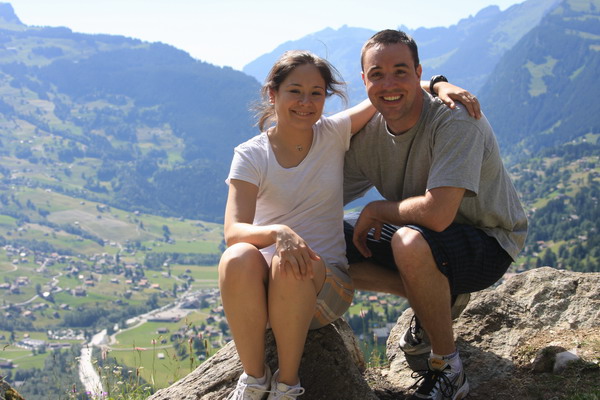
What hike would be complete without a picture of flowers??
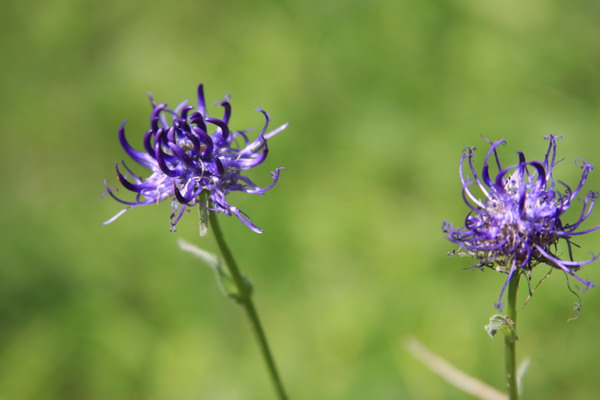
Paragliders were all over the valley.
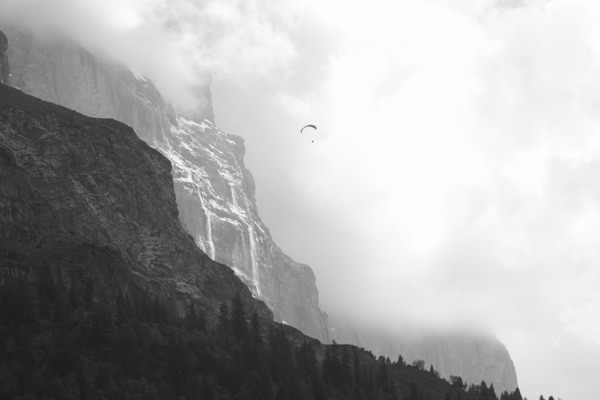
More typical Swiss architecture. All of us agreed it would be great to live here.
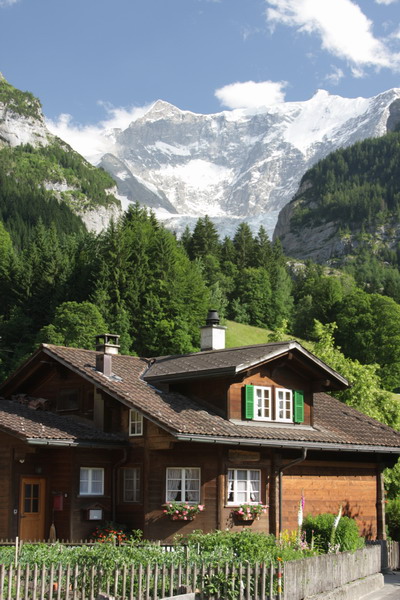
These next two images are from our hotel room. Not a bad view of the Eiger mountain.
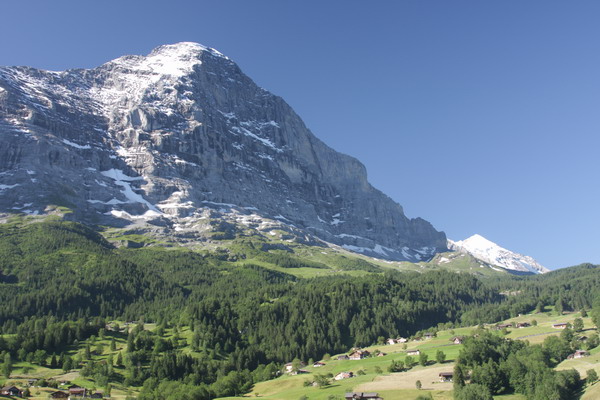
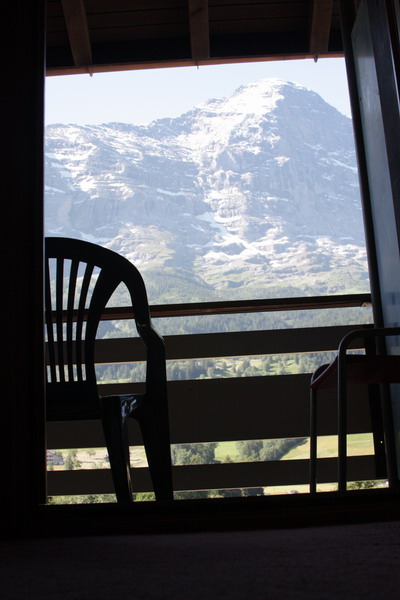
We also hiked along this precariously carved trail up the glacier gorge, Gletscherschlucht.
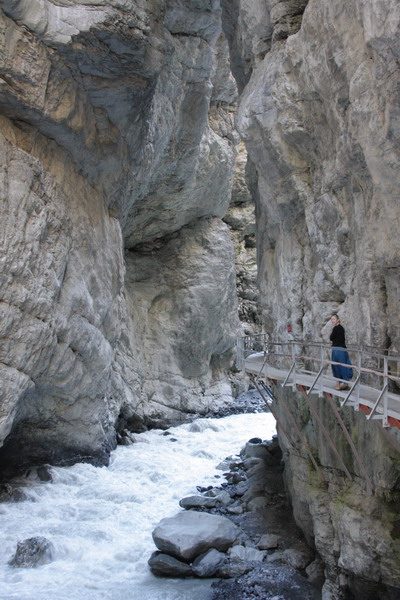
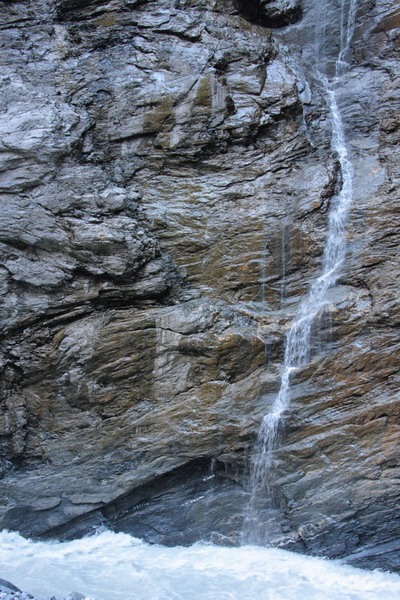
Since our adventure quota wasn’t quite filled, we decided to next launch ourselves off a cliff. Fortunately, there are many companies that are willing to help with that endeavor via paragliding. The one we chose had us load into another gondola and ride up 1,100 meters higher (4,000 feet). As you may recall from our last Swiss trip, we also went paragliding then. We liked it so much, we came back for more.
This images gives you an idea of what we were about to do.
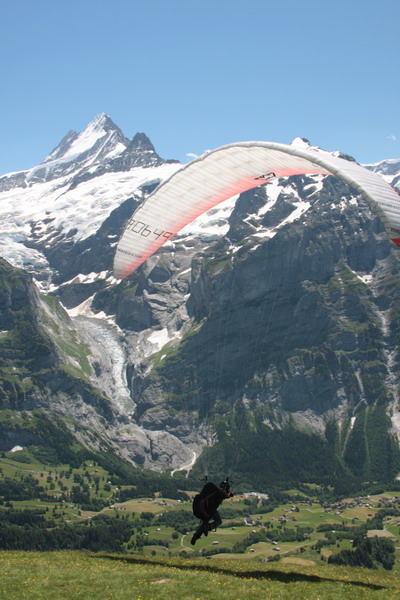
This is the view from the launch point.
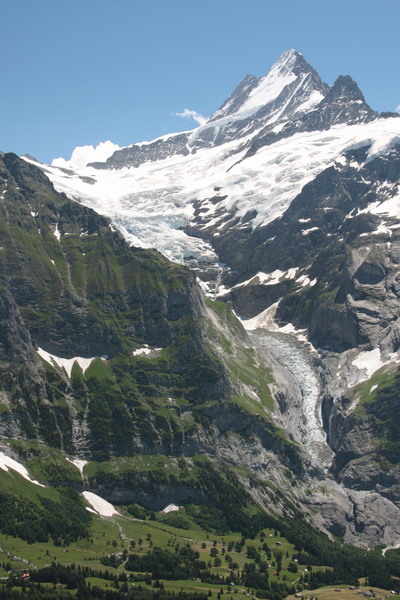
Here is Jen, all set to go.
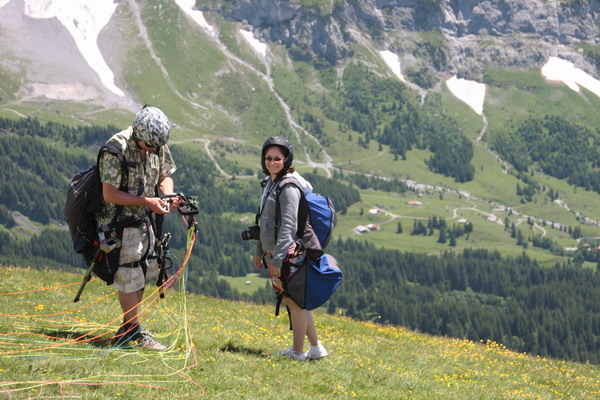
Jen and her pilot running off the cliff…
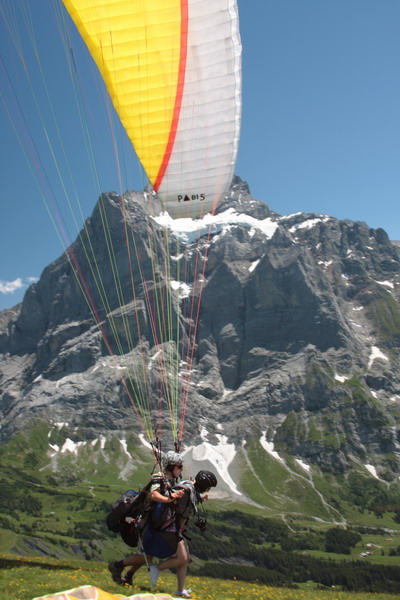
This is an image looking back at the launch point. If you look very closely, you can see Andy about ready to run off the mountain.
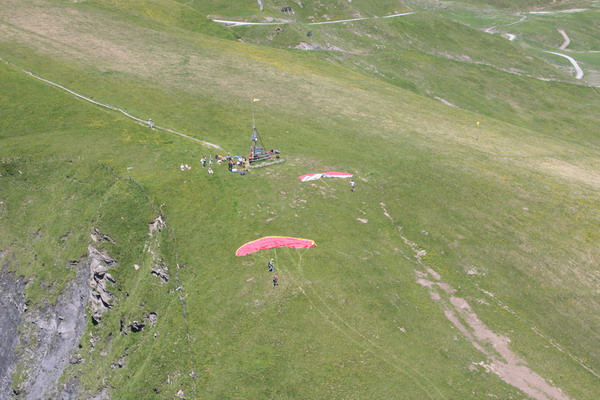
This is an aerial view of the rodelbahn. I think the cow is still there with her bell.
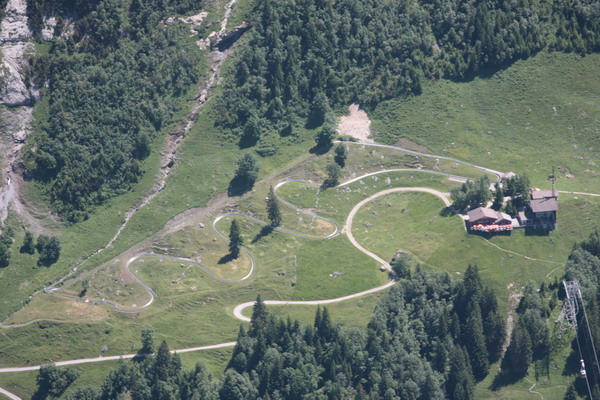
These next three images are all of Anna flying.
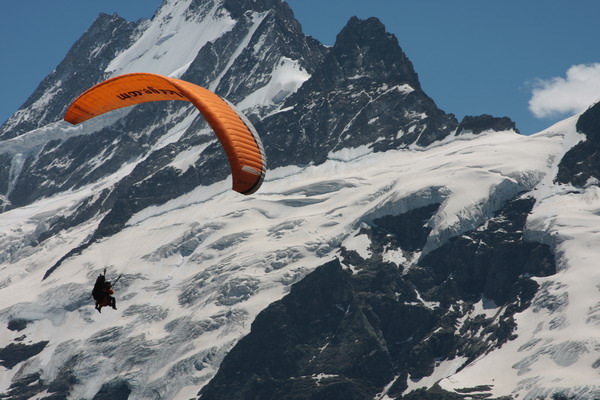
Anna made it safely back to earth and again walks with a bit of a swagger.
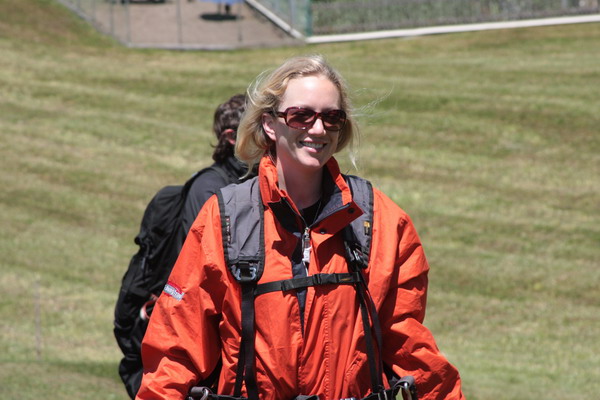
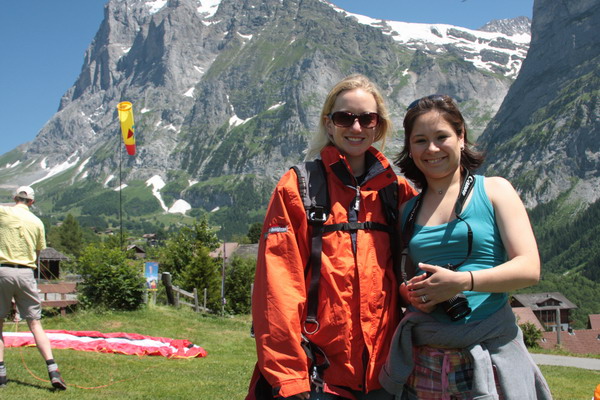
Now, here comes Andy under the red canopy.
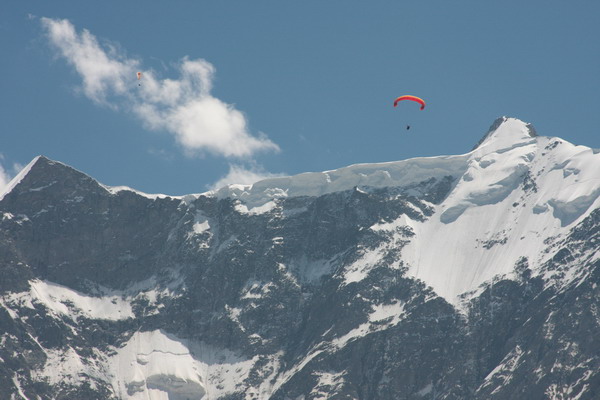
Get ready to land…
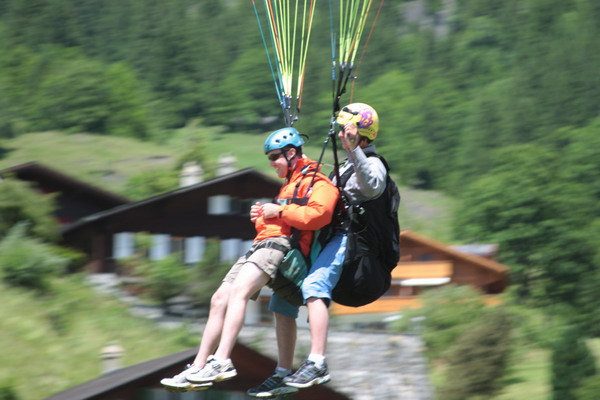
And touchdown.
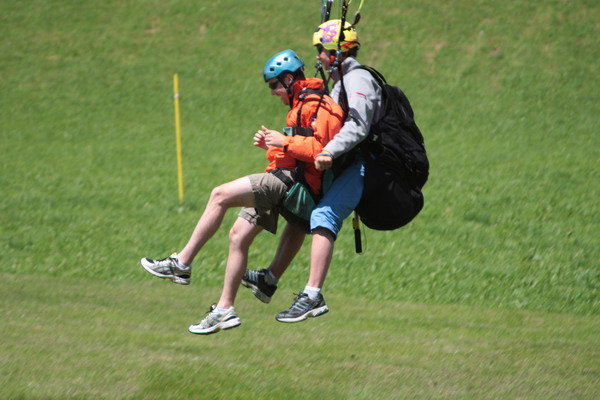
Now, it’s Andy’s turn to look back at the mountain valley he just conquered.
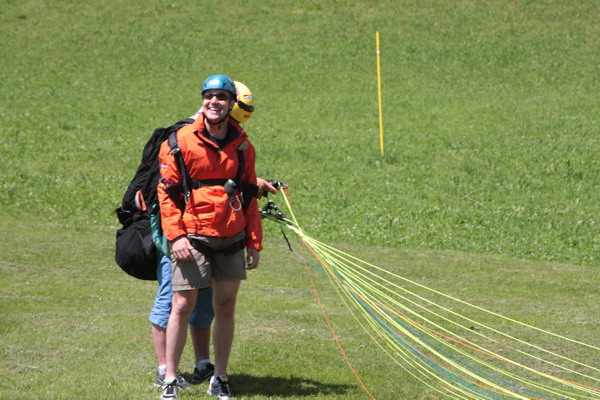
A further example of that great architecture.
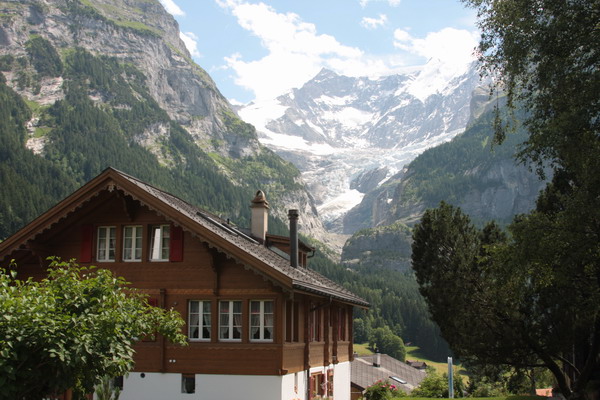
Our final stop was for lunch on the Thunersee.
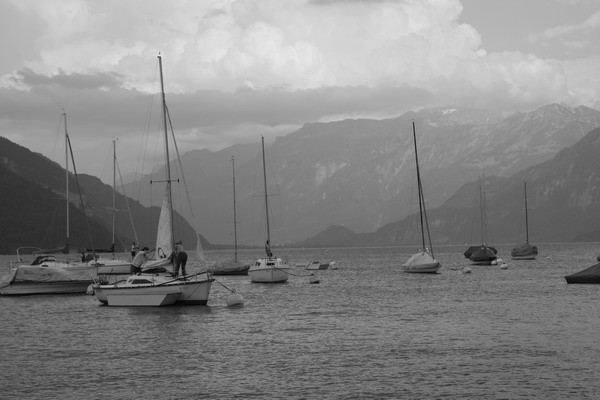
Yet again, it was an amazing trip with some of our best friends. We only wished we could have stayed longer. Perhaps when I return.
So, until the next adventure…
–Jim
Bordeaux, France
Last week, Anna and I joined our good friends Tom, Tim and Dori for a splendid week touring the area around Bordeaux, France.
This trip had less emphasis on sight-seeing. That meant fewer pictures from me. Fortunately, Tim is an amazing photographer. So, we were able to pool our images to tell the story of the trip.
We all met up to see the city, take a bike tour, and of course visit a few vineyards. However, our expectations weren’t too high for the city, because one of our favorite tour guides had some rather disparaging remarks. Rick Steves mentioned Bordeaux “must mean ‘boredom’ in some ancient language. If I were offered a free trip to that town, I’d stay home and clean the fridge.” So, with that in mind, we began our visit.
Back in 1855, at the behest of Napoleon III, the wine makers of the region were classified by their relative quality (and price). Four were classified as first growth and given the label Premier Grand Cru Classé. Château Haut-Brion was one, so we decided to take a tour.
Although the tour was less than we hoped, we did learn the manner in which the famous oak flavor is infused in the wine. You can see here the toasting of the French oak barrel.
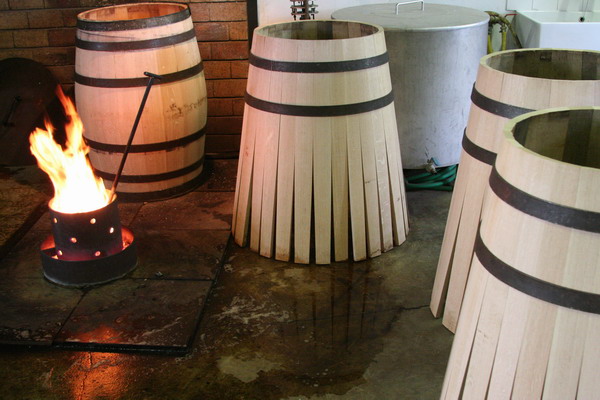
In the cellar, we were offered a glass of the 2004 vintage. Although it wasn’t the best, it was free of charge. That was true for all the wineries we visited. They all offer free tours/tasting.
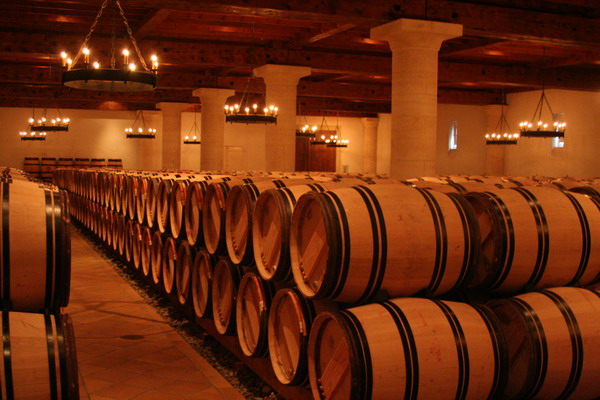
Another interesting aspect is that often you can’t buy wine at the château. Fortunately, as you might imagine, there are a number of wine stores in the city. This is one of the most unique. Five floors of spiraled wine.
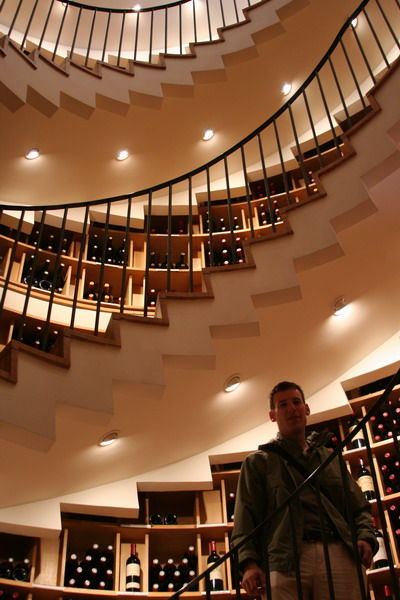
This is one of Tim’s images. You can see what a difference the ultra-wide angle lens makes.

In Bordeaux, we stayed in this great little place.
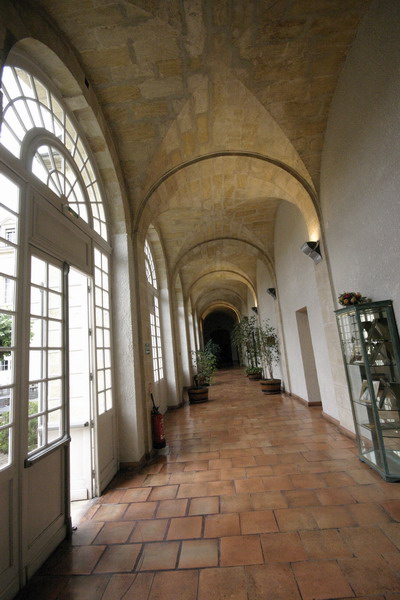
We also walked through the city and found a little friend.
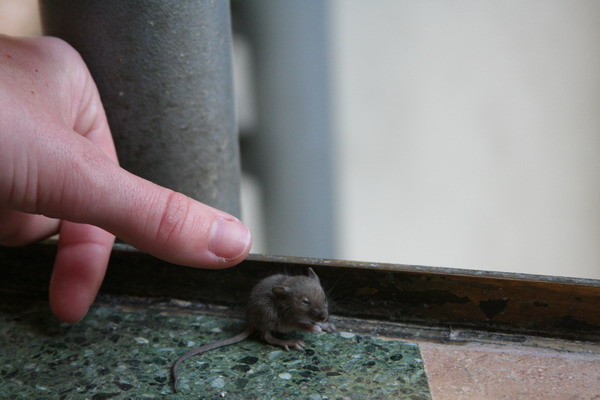
After spending a while in the city, we decided to move our party to the east, in the Sauternes region. This is also the home of the dessert wine of the same name.
The grapes grown are predominantly Semillion. Here you can see the image that Tim captured of the baby grapes.
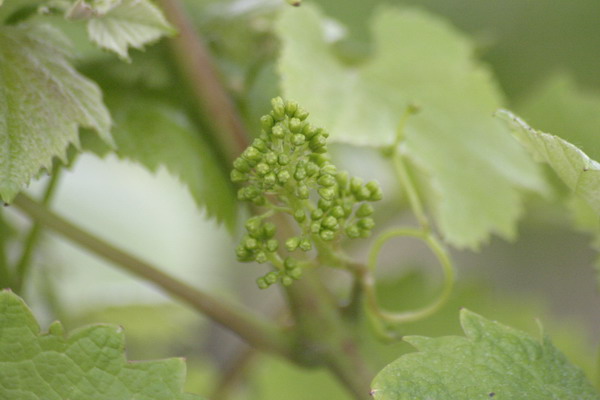
Tom’s bike was well equipped to ride with a little extra gear…
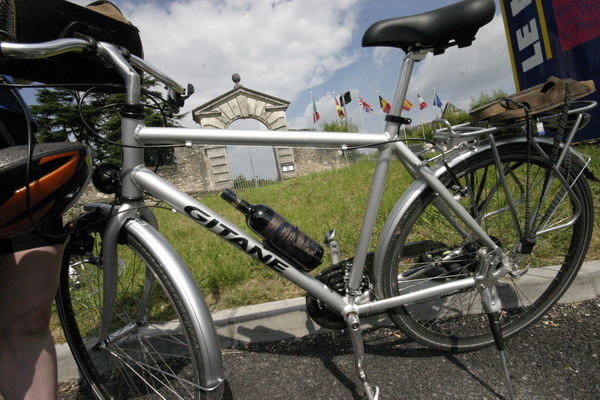
This is the view from Château St. Robert (captured by Tim again), where we stayed for a couple nights. It was an amazing location, right in the vineyards, a beautiful patio to enjoy a summer dinner and best of all, we were the only ones staying there. There are only a few rooms, so at night, we had our own personal château.
Often with the semillion grape, it is affected by “noble rot.” This is where the bacteria Botrytis cinerea attacks the grape bunch and removes water to condense the sugar. This is possible with cool, wet mornings, followed warm, dry afternoons. Tim has captured the mist very well. In fact, this is probably my favorite picture of the trip.
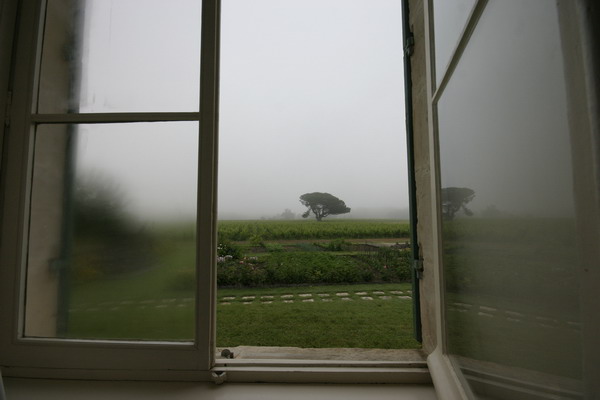
Tim also took his glass of wine out into the vineyard when we decided to climb a tree. The wine was more graceful than our climbing…
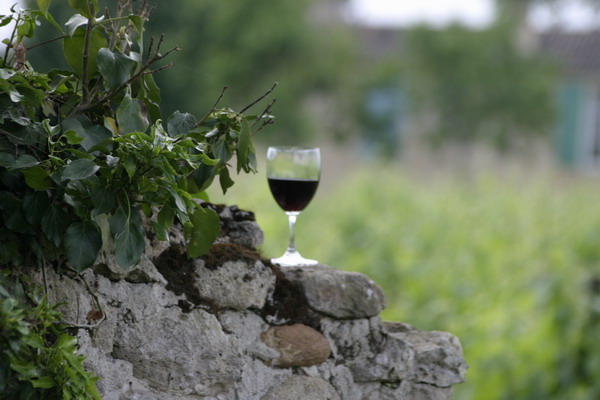
I think Tim was still feeling artistic and made this image with the local flowers and a Château St. Robert bottle.
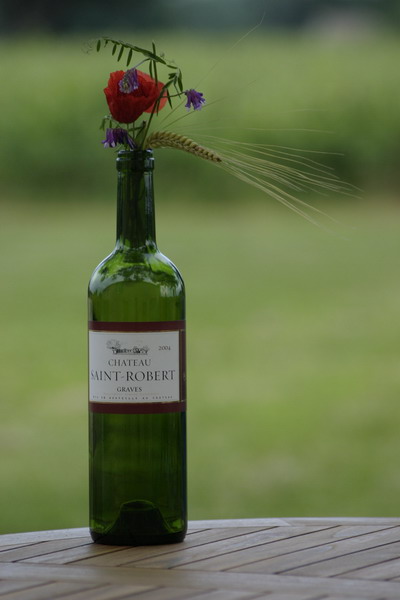
Our next stop was Château Soussac (in the picture below), where we learned of a local fete (festival). It was a great insight to the local culture and people.
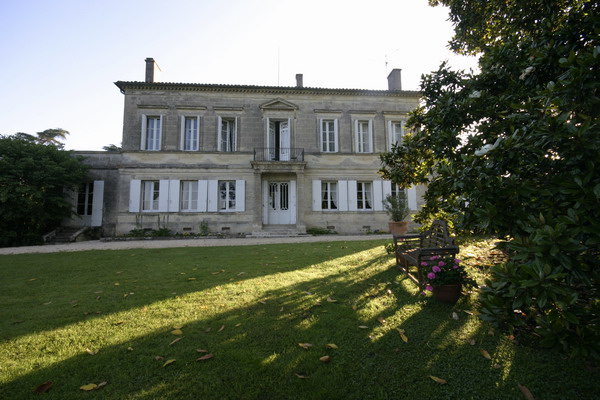
The party began with men/boys in stilts and women/girls dancing. Quite a sight.
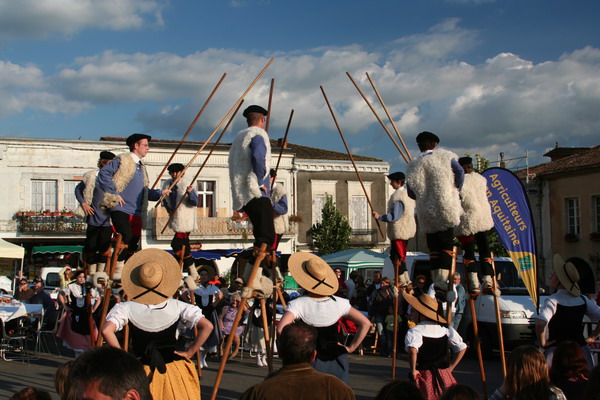
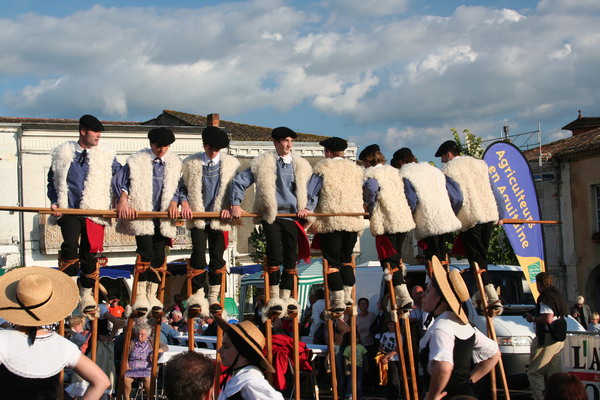
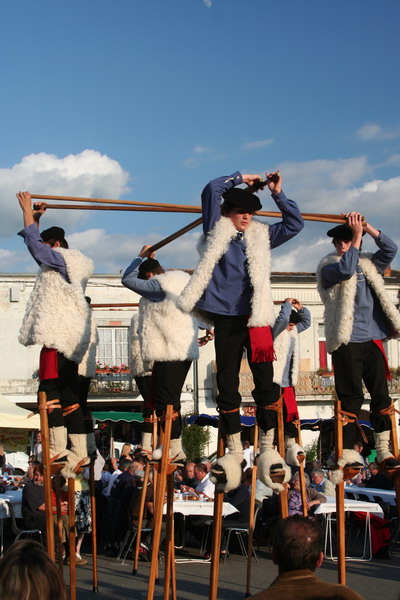
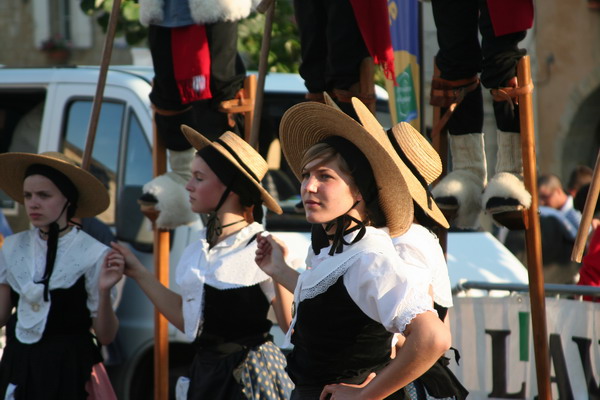
This sheep was surprisingly calm through this process. The sheered wool went to the numerous kids who played with it for about 5 minutes, after which it ended up on the ground.
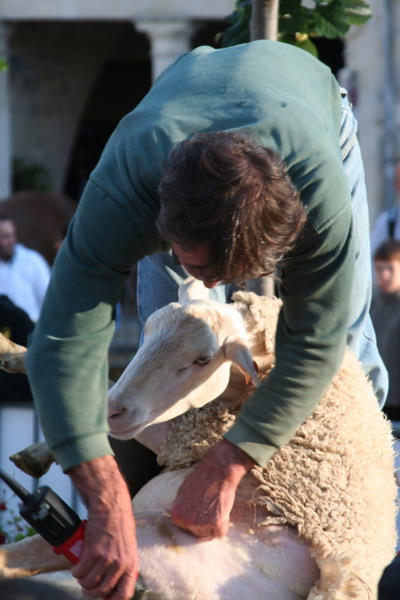
Only Tim and I tried the escargot, but it was quite tasty. If you haven’t tried it before, I highly recommend it. It’s a food that takes on the flavor of whatever sauce covers it (similar to chicken, although it tastes nothing like poultry).
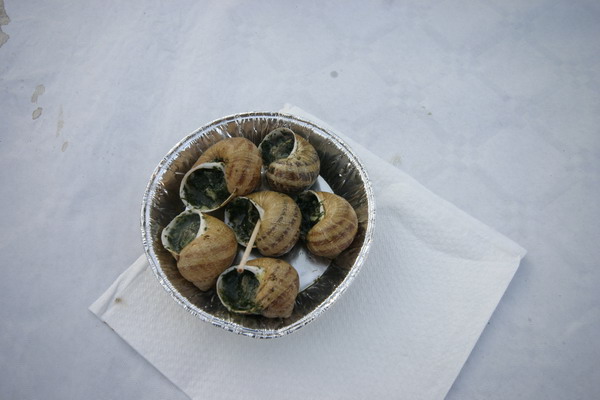
Here is Tom enjoying the feast.
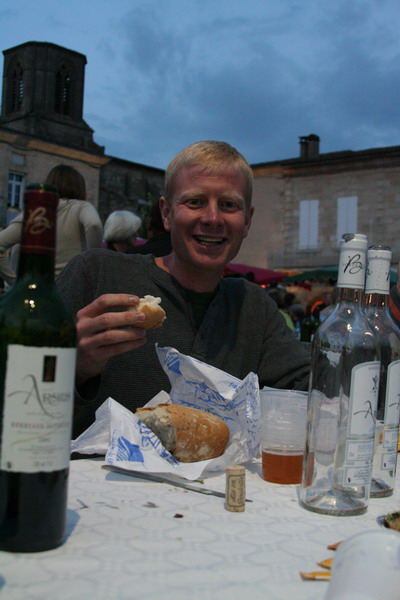
The next spectacle was the dogs who herd geese.
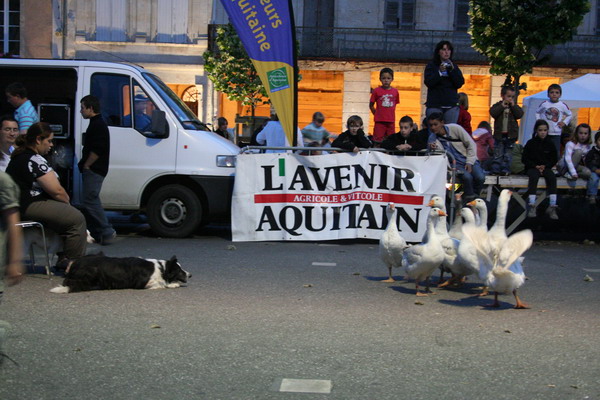
These geese moved as a pack.

We thoroughly enjoyed our evening delving into this quaint village.
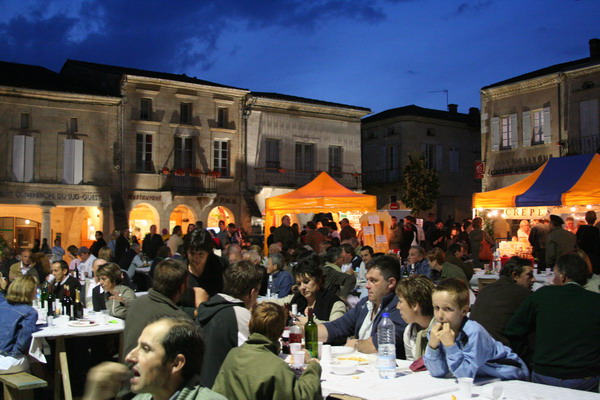
Here are a few images of the whole basis for this trip … biking.
We felt that it was only fitting to take a bike ride and have a picnic. It was delicious.
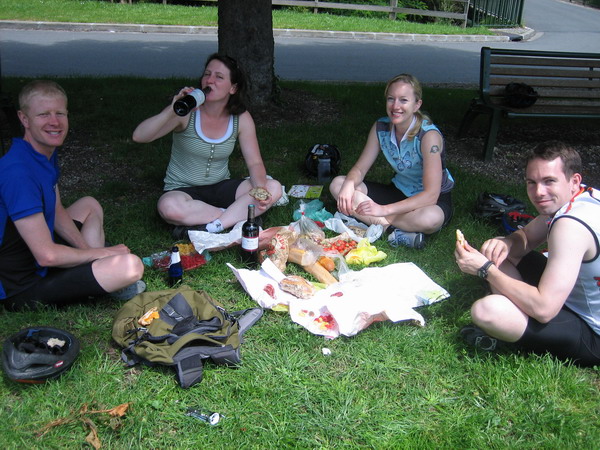
This sculpted hedge was on top of a rond-pont (traffic circle). Although the town is known as a bike town and we saw many bikers to re-enforce that idea, as we stood here taking the picture, there were at least three people who honked at us. Perhaps they were just wishing us well, but apparently not many people take pictures next to this living bicycle.
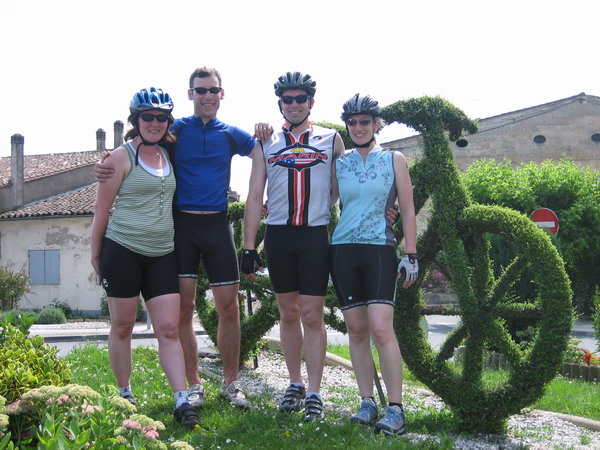
One day the girls opted for a shopping/relaxing day. So, we decided to … punish ourselves. We rode our bikes from one side of the Bordeaux region (Gironde) to the other. About 125 kilometers. It was a very pretty ride and relatively flat. This is the before picture.
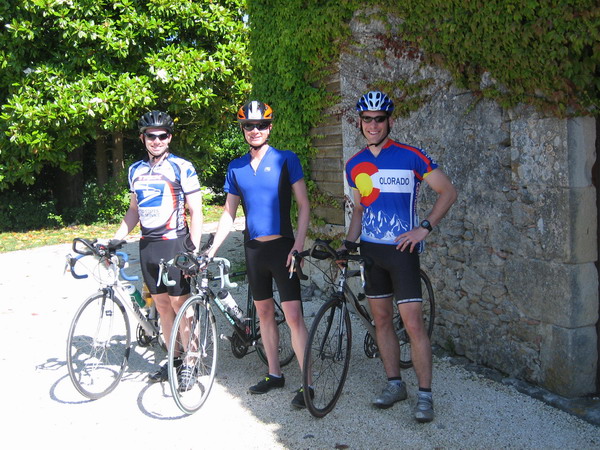
Just over halfway through our ride we traversed Bordeaux. We found traveling via bicycle in the city was better than using a car. In fact, we even had people honk and wave at us. Cycling is a much bigger deal in France.
Here you can see the pretty fountain in the middle of the city. The mist came and is (I believe) representative of the mist that enables the Noble Rot.
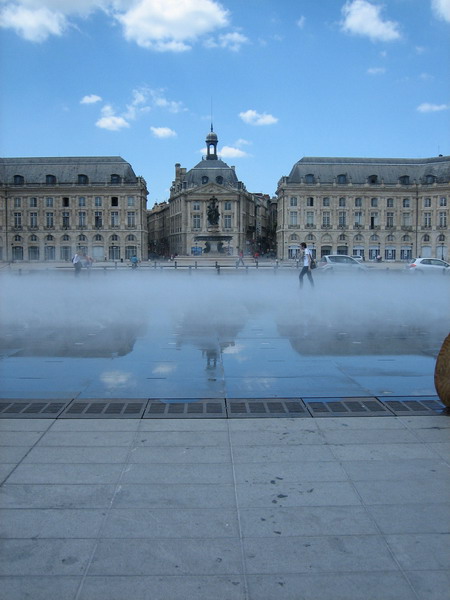
It was also refreshingly cool.
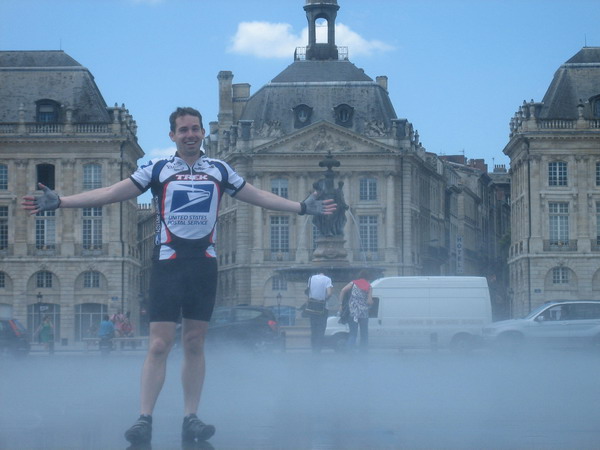
This is one of the Chateaux in Medoc. Whoever said there is no money/prestige in Bordeaux wine making, has never seen these chateaux. There were dozens just like this one.
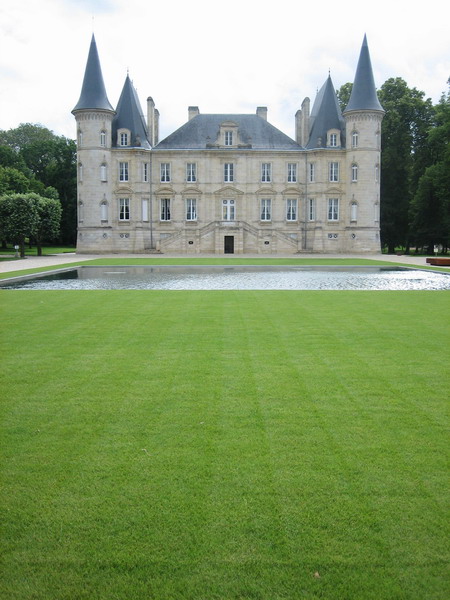
On our final day, we took a short drive over to the famous wine village of St. Emilion. We arrived in time to take part in the Fetes de Printemps (or the festival of spring). This is where many of the local winemakers come to show off their products. It seemed to us that this was as much for other wine makers as it was for tourists.
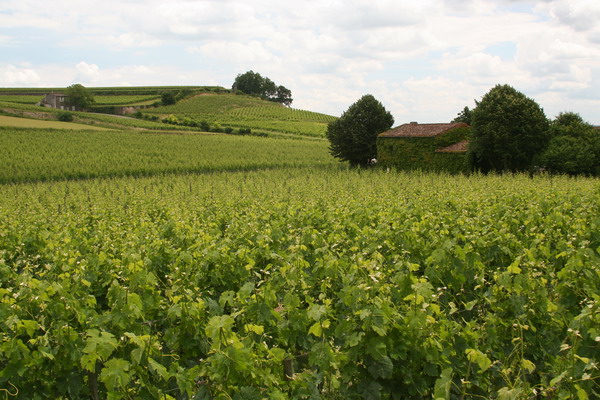
This is the villagescape. The main focal point is the monolithic church that was begun in the 8th century. It’s amazing to see, and the most impressive fact is that it was carved out of the limestone cliff.
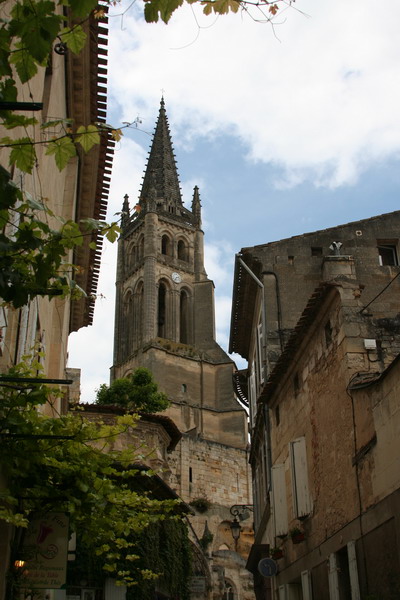
Here Tim’s wide angle lens gives a better view of the church. We toured the inside as well, but unfortunately, they did not allow cameras. However, an entire church cathedral carved out of the solid stone (hence monolithic) is a very impressive engineering feat … all the more so because it’s from the Middle Ages. The only minor mistake the monks made was that the steeple built above ground was slightly off center. Unfortunately, that meant that the giant columns underground meant to support the weight of the bell tower weren’t properly placed. This caused about 2 decades of concern once French engineers realized that cracks were forming in the foundation. The eventual solution was to install giant steel girders around the vulnerable columns. It’s not the most aesthetically pleasing, but it is apparently sufficient to continue to hold the weight.
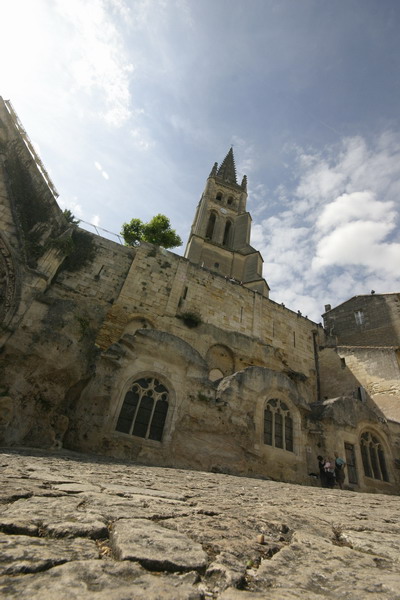
Since we heard so much about this bell tower while we toured the underground, we decided to climb it and see what all the hype was about. It certainly afforded majestic views of the countryside and village.
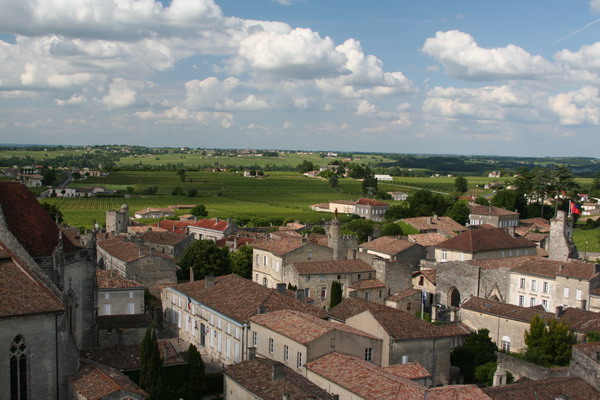
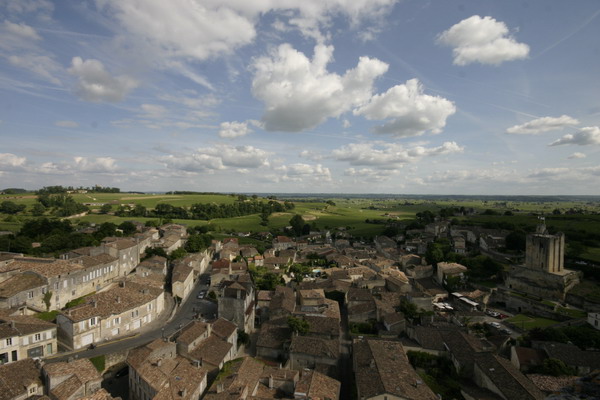
This is the King’s Tower, the second most famous tower in the village.
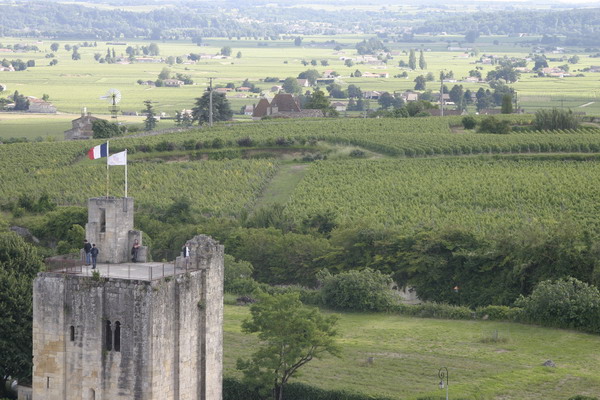
Tom and the ladies…
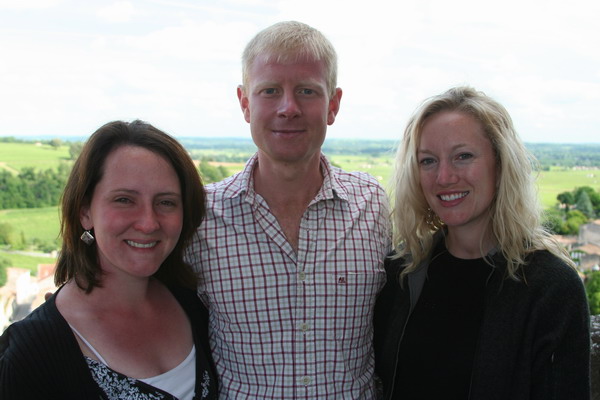
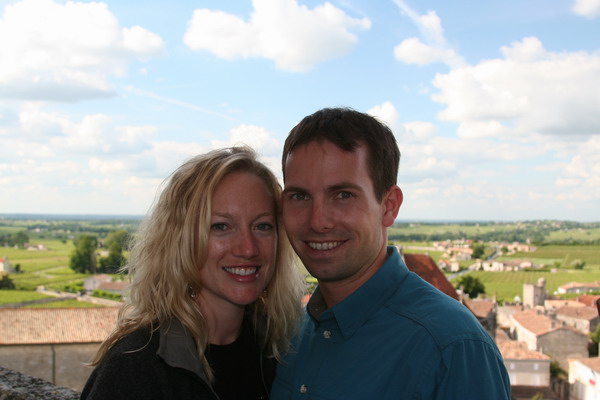
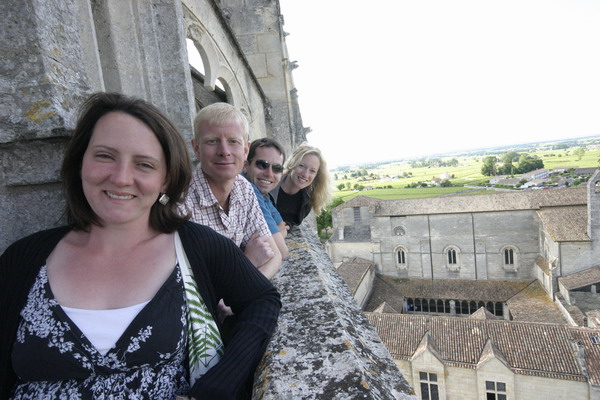
This final image is not mine. It’s a representation of the cave painting we saw nearby. In fact, these paintings are the oldest recorded cave paintings in the world. The first cave we visited, Grotte de Fonte de Gaume, has this image on the cave wall and is the last Stone Age era cave painting still open to the public. It was incredible to walk into a cave, and see something our ancestors created BEFORE the last ice age (13,000 years ago). Unfortunately, since the pigment is not carbon based, precise dating is difficult. However, the calcium carbonate that covers parts of the painting can be dated to the last ice age. So, we know that the paintings are at least that old. Combined with other archeological found at this sight and others nearby, the estimate that the actual age of the painting is more like 17,000 years old. Sadly, the most magnificent cave painting at Lascaux is closed to the public. From the time it was discovered in the 1940s until the 1960s when it was closed to the public, it deteriorated at an alarming rate. So, to remedy that problem, French engineers and painters created an exact replica of the most stunning parts and built it into the ground about 200 meters away. Although the replica is quite stunning it didn’t compare to the real paintings we saw at Fonte de Gaume. We hope that at least that cave stays open for a long time to come.

Bordeaux has a lot to offer and we really enjoyed our time there. Since we didn’t have high hopes for the sights, we were very pleasantly surprised. Spending time with our good friends Tom, Tim and Dori was the highlight though.
We look forward to another adventure with them soon.
So, until then…
–Jim
Chartres Cathedral
A couple weeks ago, we took a trip down to the region around Bordeaux, France. Since it was a long drive, we decided to stop by the famous Chartres Cathedral.
This ultimate expression of high Gothic architecture was truly amazing. It literally rises out of the town around it, disproportionately large. The cathedral was the site of numerous pilgrimages after one of the French monarchs (either Charlemagne or Charles the Bald) brought the supposed veil of the Virgin Mary to the cathedral after one of the crusades and countless pilgrims followed.

The building has survived numerous wars and restorations to retain its original grandeur and elegance. It took the shape you see today in the year 1260 when it was dedicated in the presence of King Louis IX (who is also known as Saint Louis).
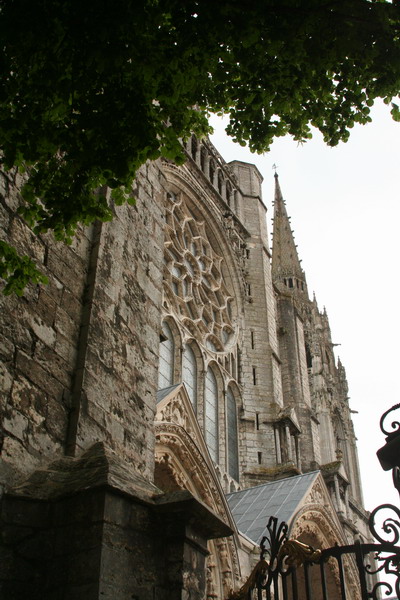
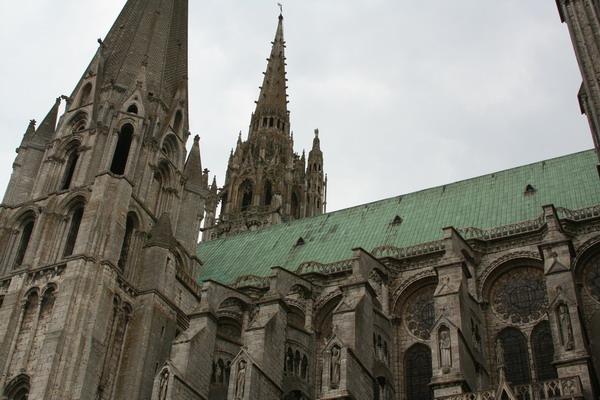
Perhaps even more impressive than the building surviving a tumultuous French history, is the stained glass that dates from the early 13th century. Of the original 183 stained glass windows, 152 have survived. The blue hues are particularly renowned, especially this Madonna and Child.
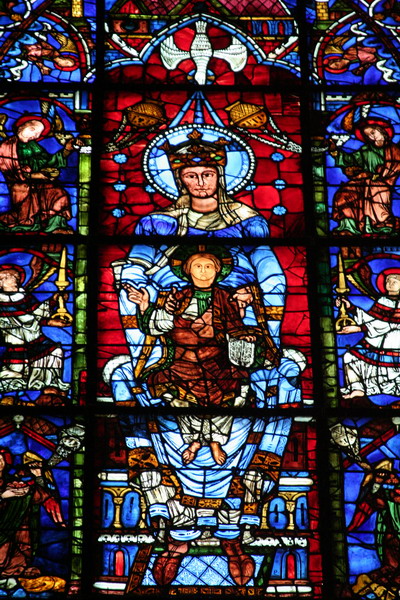
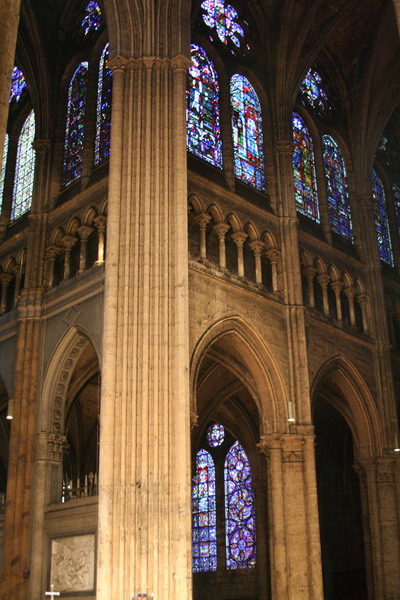
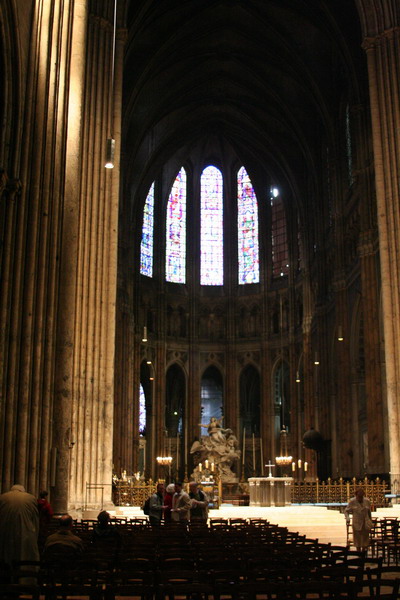
This impressive monument to medieval builders is certainly one of my favorites. It’s easy to see why this was chosen as a world heritage site.
However, our real trip was to venture all the way to southern France into the area surrounding Bordeaux, France. So, until then…
–Jim
